Celebrity Blog
- Special Occasions
- Choosing a Cruise
- Planning / Booking A Cruise
- Preparing For Your Cruise
- What To Expect On A Cruise
- Australia, New Zealand & the Pacific
- Central America
- East Coast & Bermuda
- Mexican Riviera
- South America & Antarctica
- Destinations

Closed-Loop Cruises: Everything You Need to Know
By Sue Bryant
Last updated: April 30th, 2024
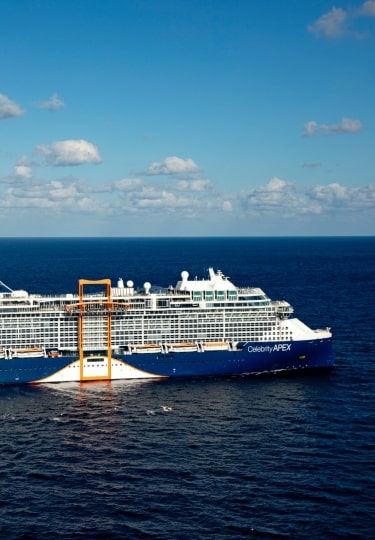
- Find a Cruise
Have you ever found yourself with a few days to spare and an overwhelming desire to escape to the balmy Caribbean, or on an Alaskan adventure, then realized that you don’t have a passport, or your passport has expired? As a U.S. citizen, you can take advantage of the convenience of what’s called a closed-loop cruise—with no passport required.
What is a closed-loop cruise?
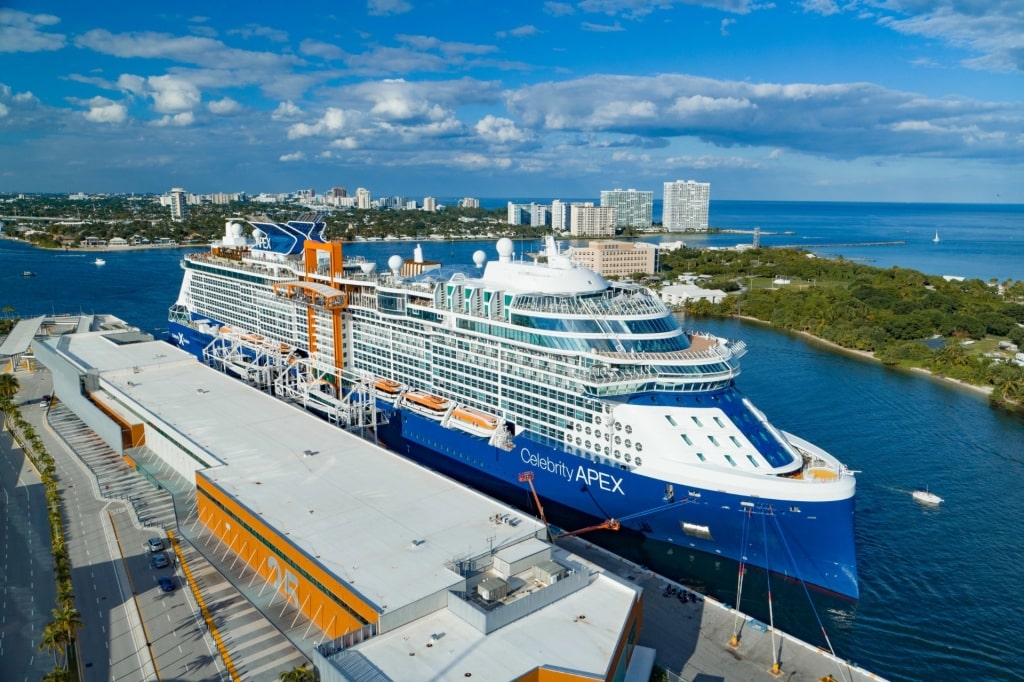
Fort Lauderdale, Florida
A closed-loop cruise is a cruise that departs and ends in the same U.S. port; for example, Fort Lauderdale to Fort Lauderdale, or round-trip to Alaska from Seattle .
These cruises have to meet certain criteria to qualify. Every voyage on a ship that’s not U.S. flagged, departing from and returning to a U.S. port must, according to maritime law, visit one foreign port of call. This is why you’ll find Alaska cruises stopping in Vancouver, or Western Caribbean cruises calling in at Cancun.
To qualify as closed-loop cruises, the places these itineraries can include must be contiguous territories of the United States. That includes Mexico and Canada, because both share land borders with the U.S., and several of the islands of the Caribbean .
Do I need a passport for a closed-loop cruise?

Key West, Florida
In most cases, you don’t need a passport for a closed-loop cruise. This is one of the reasons why these itineraries are so popular. You can, of course, use your passport or passport card as an ID if you have one. But in the case of closed-loop cruises, U.S. citizens are allowed to enter or depart the country with proof of citizenship.
According to U.S. Customs & Border Protection, this includes an Enhanced Driver’s License, which is a state-issued driver’s license that provides proof of identity and U.S. citizenship; a government-issued birth certificate (issued by the Vital Records Department in the state where the person was born) or passport; and if 16 or older, a government-issued driver’s license or picture ID denoting photo, name, and date of birth.
The Enhanced Driver’s License allows you to re-enter the U.S. from Canada, Mexico , and the Caribbean and is valid at land and sea border crossings but not airports.
Different documentation is acceptable for minors under 16, including an original, notarized, or certified copy of their birth certificate, a Consular Report of Birth Abroad, or a Certificate of Naturalization. Voter registration cards and Social Security cards are not considered proof of citizenship.
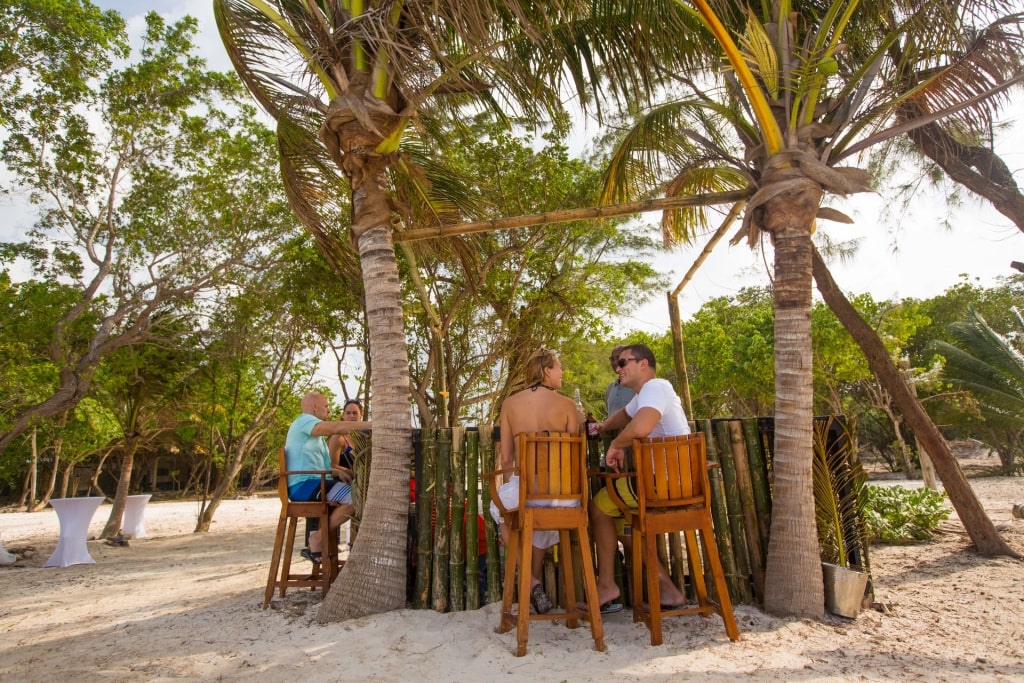
Falmouth, Jamaica
There are different rules if you’re a Lawful Permanent Resident (LPR) of the U.S. While the U.S. government does not require you to have a passport, destinations on the itinerary may have different rules, so it’s always advisable to check.
If you are an LPR, you’ll need your I-551, or Green Card, to re-enter the U.S. And if you’re not a U.S. citizen or a U.S. LPR, you’ll need a passport regardless of whether you’re on a closed-loop cruise or not.
If you do choose to take advantage of this opportunity to travel without a passport, there are a couple of warnings to bear in mind. Say, for example, something goes wrong and you have to return to the U.S. by air. In this case, you’d need a passport to board a flight.
Also, if you miss the ship in one of the ports, you’ll have to make your own way home or to catch up with the cruise, which could be difficult without a passport. If you book an excursion through Celebrity Cruises, that won’t happen, since the ship is guaranteed to wait for you.
What are some of the best closed-loop cruise itineraries?
Fort lauderdale to perfect day at cococay.
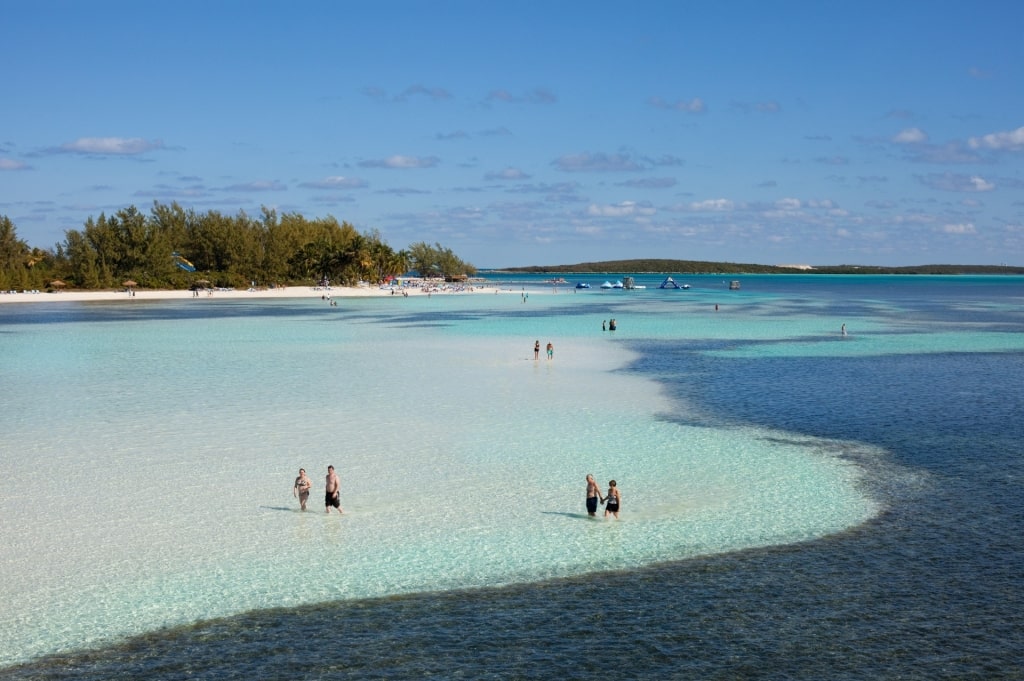
CocoCay, Bahamas
Sail round-trip from Fort Lauderdale to the sunny Bahamas on a getaway that includes the award-winning private island of CocoCay. Depending on the itinerary, you’ll also have time in either Nassau, Bimini, or Key West.
Historic Nassau combines fascinating colonial-era architecture, like the limestone-carved Queen’s Staircase and the candy-pink Parliament Building, with dreamy beaches and a thriving culinary scene.
Join a rum tasting at John Watling’s Distillery, shop for locally made trinkets in the Straw Market, and relax on the long, sandy sweep of Cable Beach.
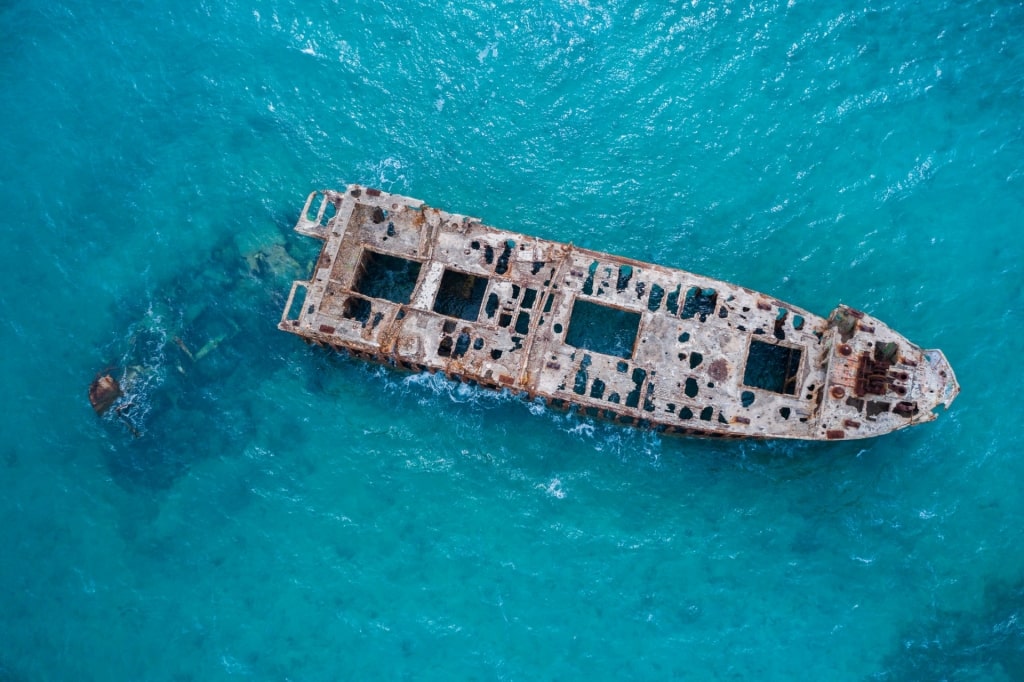
S.S. Sapona shipwreck in Bimini, Bahamas
Tiny Bimini is surrounded by the clearest seas imaginable. Join a tour to swim among reef sharks, or go snorkeling over the wreck of the S.S. Sapona, now colonized by marine life and thriving as a colorful reef.
CocoCay is for many the highlight of a cruise to the Bahamas. Fly down Devil’s Peak, the tallest waterslide in North America, or kick back on the adults-only Hideaway Beach, where a DJ spins tunes all day and the cocktails flow.
Elevate your experience with a private overwater cabana with a slide to propel you straight into the crystal-clear water.
Boston to Maine & Canada
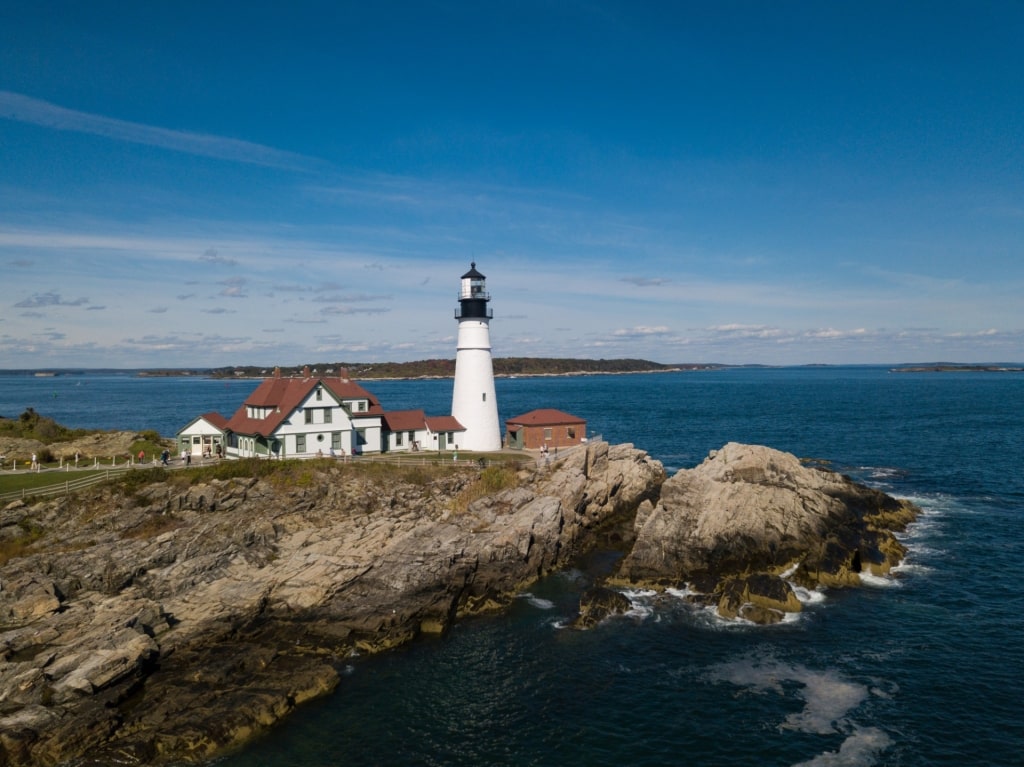
Fort Williams Park, Maine
Sail round-trip from Boston in the late summer and early fall, just as the trees are beginning to take on their brilliant autumn colors.
You’ll cruise the coast of Maine, calling at pretty Rockland, its rugged coast inviting exploration on foot or on two wheels. As this is the self-styled “lobster capital of the world”, you don’t want to miss the chance to enjoy a lobster roll here.
Across the border in Canada , you’ll visit Halifax, famed for its maritime history and iconic Peggy’s Cove Lighthouse, as well as Sydney on rugged Cape Breton Island.
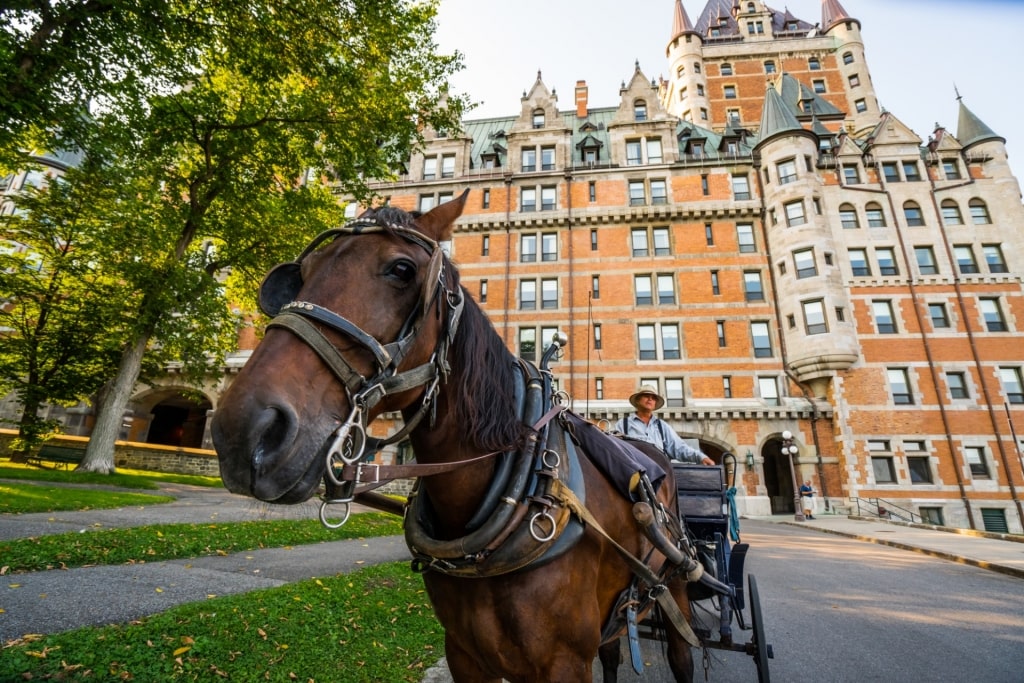
Québec City, Canada
Our cruises to Maine and Canada also spend a night in beautiful Québec City on the St. Lawrence River. You’ll have plenty of time to explore the cobblestone streets and restaurants of the Old Town, established 400 years ago.
Don’t miss the outstanding Musée de la Civilisation and the famous Château Frontenac. While you’re here, remember to try poutine, the local specialty, which is French fries drenched in gravy and cheese curds.
Seattle to Alaska, the Inside Passage, and Dawes Glacier
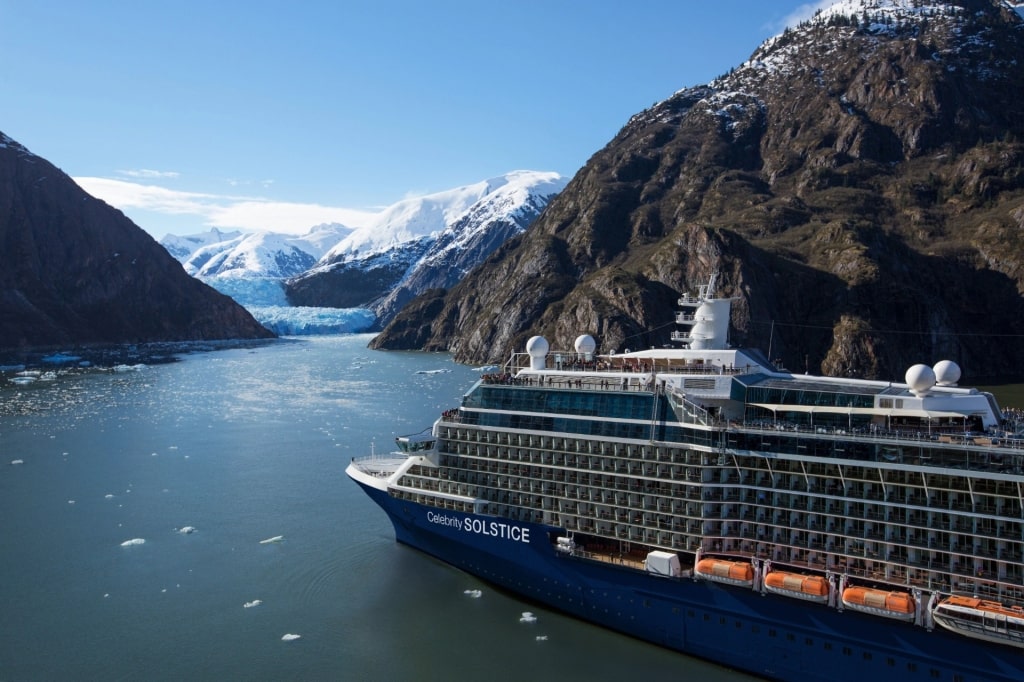
Tracy Arm Fjord, Alaska
Spend seven nights exploring the wild beauty of Alaska on the innovative Celebrity Edge. It’s the perfect ship for such dazzling scenery, with its abundance of outside space and the thrilling Magic Carpet, offering uninterrupted views of Alaska’s forested shores and jagged mountains.
You’ll visit pretty Ketchikan, from where you could join a bear-spotting tour, try kayaking, join an expedition to fish for king crab, or just explore the colorful town.
Next, there’s a full day slowly cruising the 30-mile Endicott Arm Fjord, past tumbling waterfalls and chunks of floating ice that have broken off the magnificent Dawes Glacier, a 600-foot tall wall of blue-white ice. The spectacle of this vast river of ice meeting the sea is a highlight of the day.

Mendenhall Lake in Juneau, Alaska
You’ll also visit Juneau , the perfect spot for whale-watching, hiking, and thrilling flightseeing trips over snow-covered mountains. In Skagway, you’ll have the chance to ride the spectacular White Pass and Yukon Route railroad, heading high over rugged passes, following the trail of hardy prospectors from the Gold Rush days.
As the ship heads back to Seattle, there’s a day on board to relax as the ship threads its way through the narrow channels of the Inside Passage , between forested islands and rock-strewn beaches, with great opportunities for spotting whales and bears from your vantage point on deck.
There’s also a call at historic Victoria on Canada’s Vancouver Island, where you can experience a pleasing blend of elegant, British colonial architecture, cool shops, and craft breweries before you return to Seattle.
Browse Alaska Cruises on Celebrity Edge
Fort Lauderdale to the Eastern Caribbean
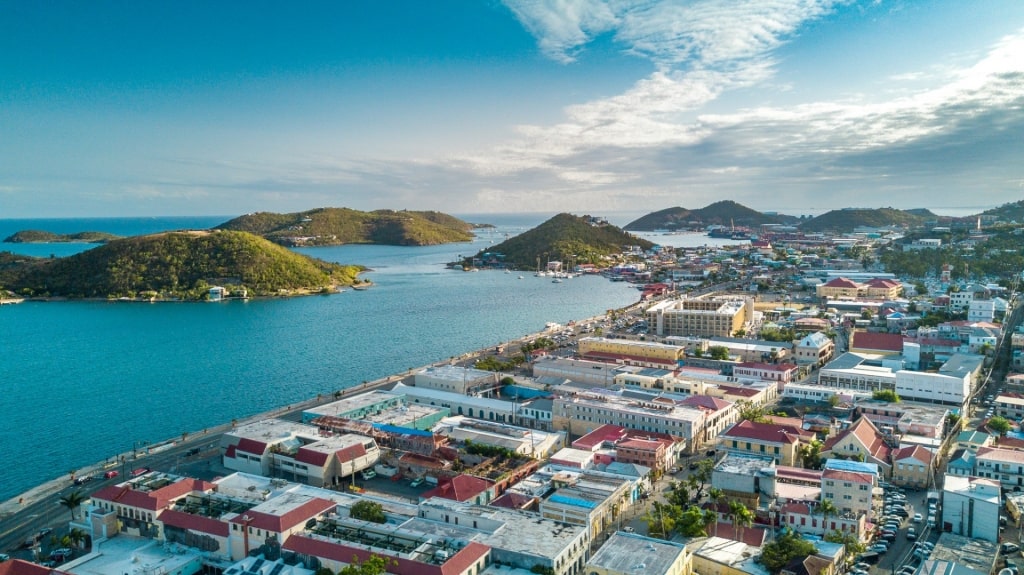
Charlotte Amalie, St. Thomas
You’ll find a wide choice of itineraries and ships sailing from Fort Lauderdale to the islands of the Eastern Caribbean on itineraries ranging from seven to 10 nights.
Islands you could visit include pretty St. Thomas in the U.S. Virgin Islands , fringed by exquisite beaches. Across the water is Tortola, the epicenter of the British Virgin Islands, famed as a paradise for sailing and watersports.
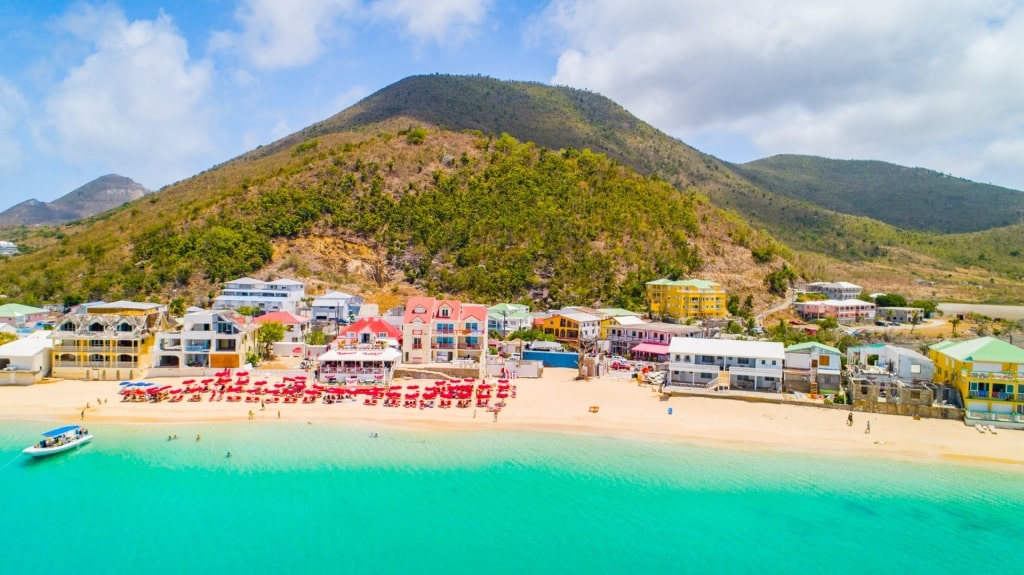
Grand Case, St. Maarten
St. Maarten , shared by France and The Netherlands, gives you a taste of two cultures, although the beaches are exceptional whichever side of the island you favor. Head to pretty Grand Case for fine French-Caribbean dining, or browse the duty-free shops of Philipsburg on the Dutch side.
At Puerto Plata in the Dominican Republic, the culture bears Spanish influences in the language and architecture. Venture into the island’s interior to explore the rainforest in a 4×4, or to visit a coffee plantation to learn how coffee is produced.
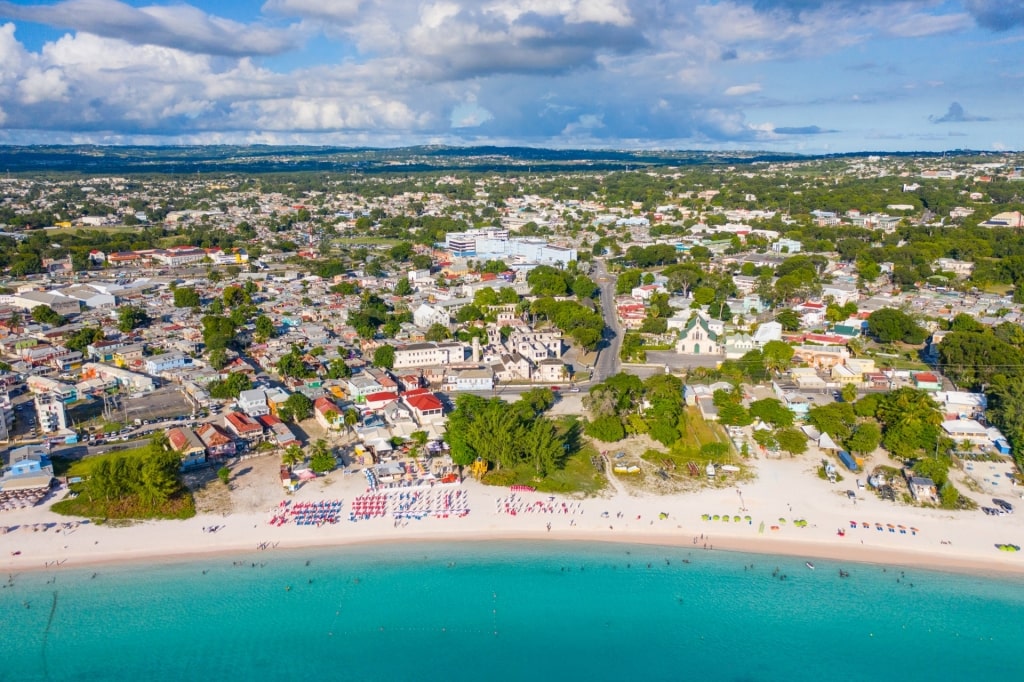
Bridgetown is decidedly British in influence, with fine Georgian architecture and one of the Caribbean’s most famous cricket grounds, The Oval. In Barbados , go sailing, snorkeling, or even surfing on the island’s wilder Atlantic coast, or head to the Barbados Wildlife Reserve to observe green monkeys.
You’ll find fascinating history on St. Kitts, too, if you can tear yourself away from its gorgeous beaches. One of the best day trips here is a ride on the vintage St. Kitts Scenic Railway, which snakes around the coast and acrossthe lush countryside, following the route once used to transport sugar cane to Basseterre, the capital.
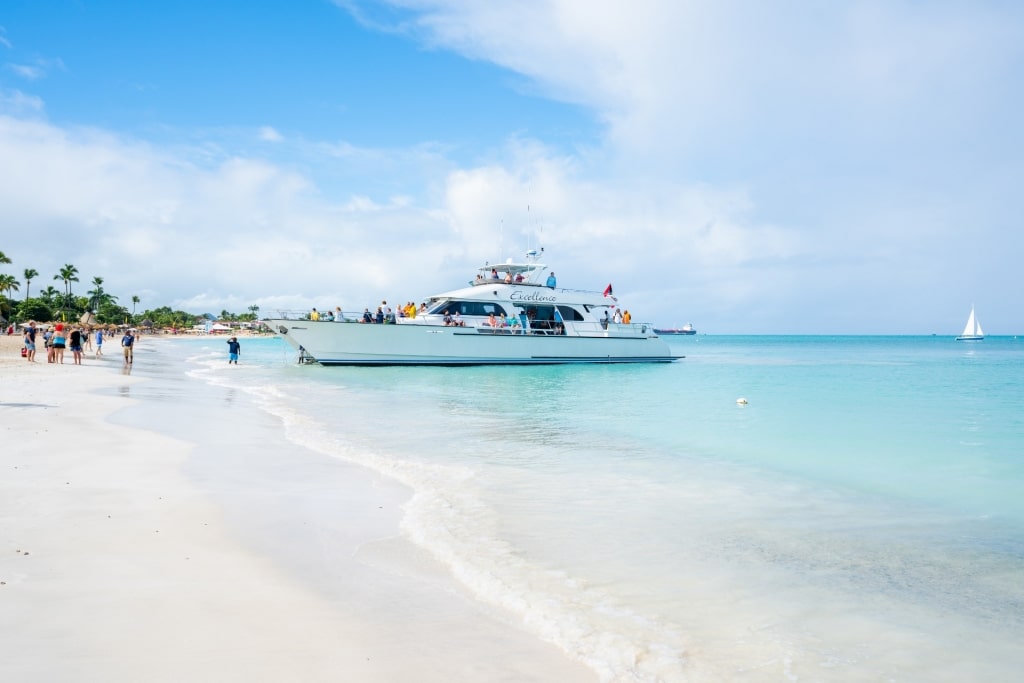
Beach in Antigua
Everywhere in the Caribbean has spectacular beaches, but perhaps nowhere more so than Antigua , which boasts 365, so you’ll have plenty of choice. Dickenson Bay is one of the liveliest, with soft golden sand, while dreamy Ffryes Beach is the archetypal Caribbean paradise, with sugary sand and coconut palms.
If your itinerary includes St. Lucia , meanwhile, one of the best ways to admire the mountainous coastline, dominated by the twin peaks of the Pitons, is by boat. Join a sailing trip from Rodney Bay and take in spectacular views, the breeze in your face and an iced rum punch in hand.
Cape Liberty to Bermuda
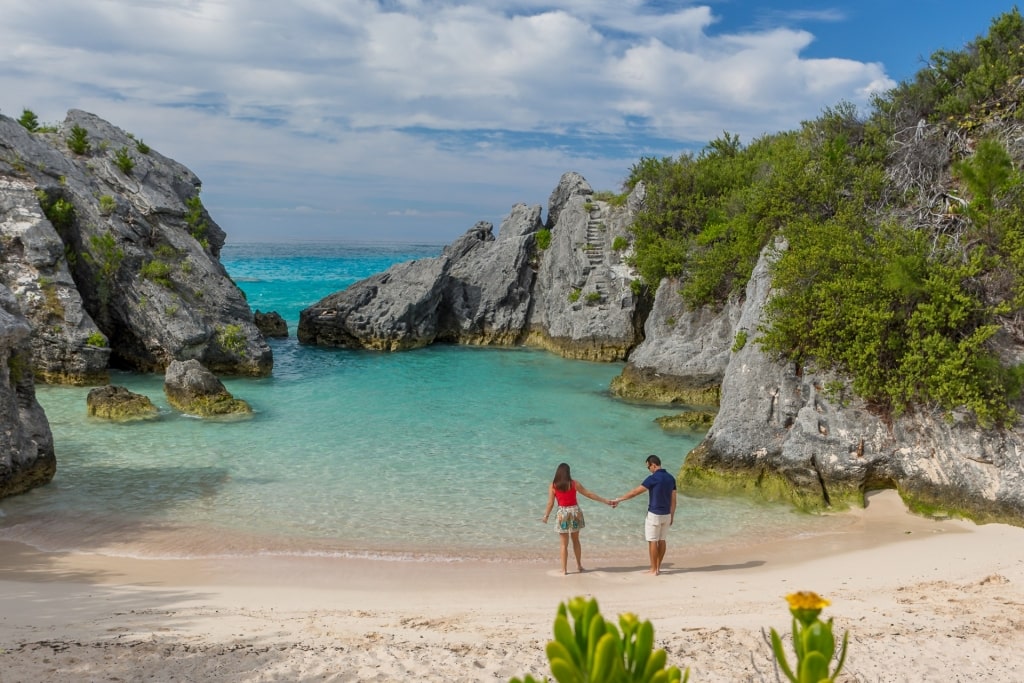
Jobson’s Cove Beach, Bermuda
Charge your champagne glass and raise a toast to Lady Liberty on this seven-night voyage from Cape Liberty, New Jersey to chic Bermuda and back.
As your ship, Celebrity Eclipse or Celebrity Silhouette edges out of port, you’ll have magnificent views of the Manhattan skyline as you sail right past the Statue of Liberty and then out under the iconic Verrazzano-Narrows Bridge, setting a course southeast to balmy Bermuda .
Here, on this enchanted island where the sand is pink and the policemen wear knee-length shorts, you’ll have two and a half days to explore, which means two overnight stays .
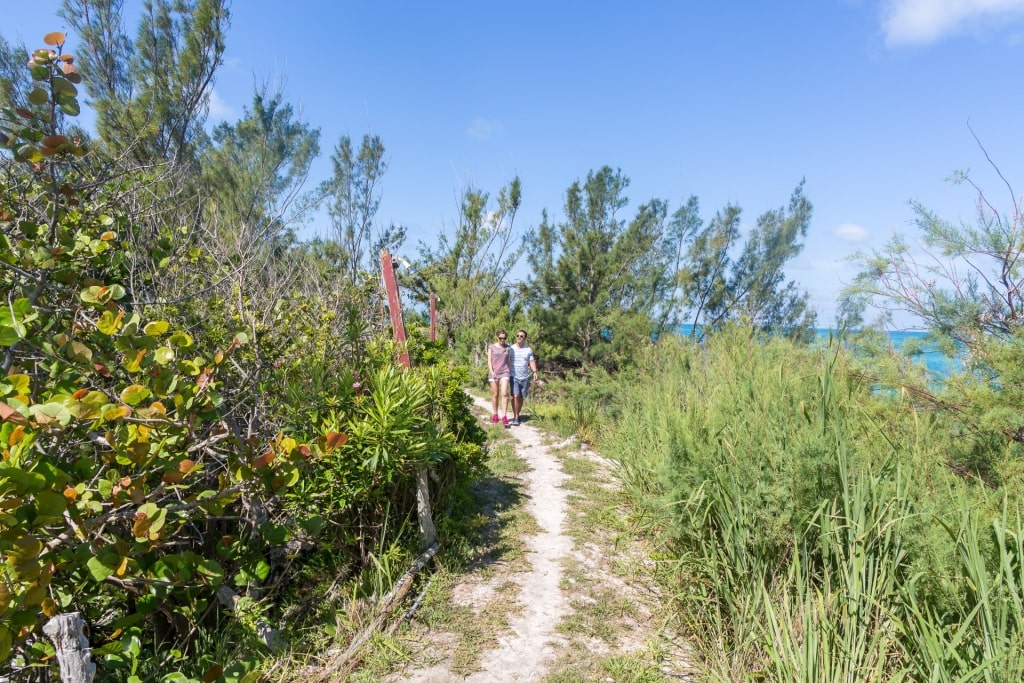
Railway Trail, Bermuda
There’s plenty to do, from snorkeling to golf, exploring the shops and galleries in Hamilton, the pastel-hued capital, and visiting the island’s forts. Hike the historic Railway Trail, consisting of 18 miles of scenic pathway following the course of an old railroad line.
Set sail on a catamaran trip at sunset, or join a pub crawl of Hamilton’s bars after dark. One of the most unique things to do in Bermuda is to sample a Dark ‘n’ Stormy, the powerful local specialty made of dark rum with ginger beer and a slice of lime.
Browse Bermuda Cruise Itineraries
Fort Lauderdale to Southern Caribbean
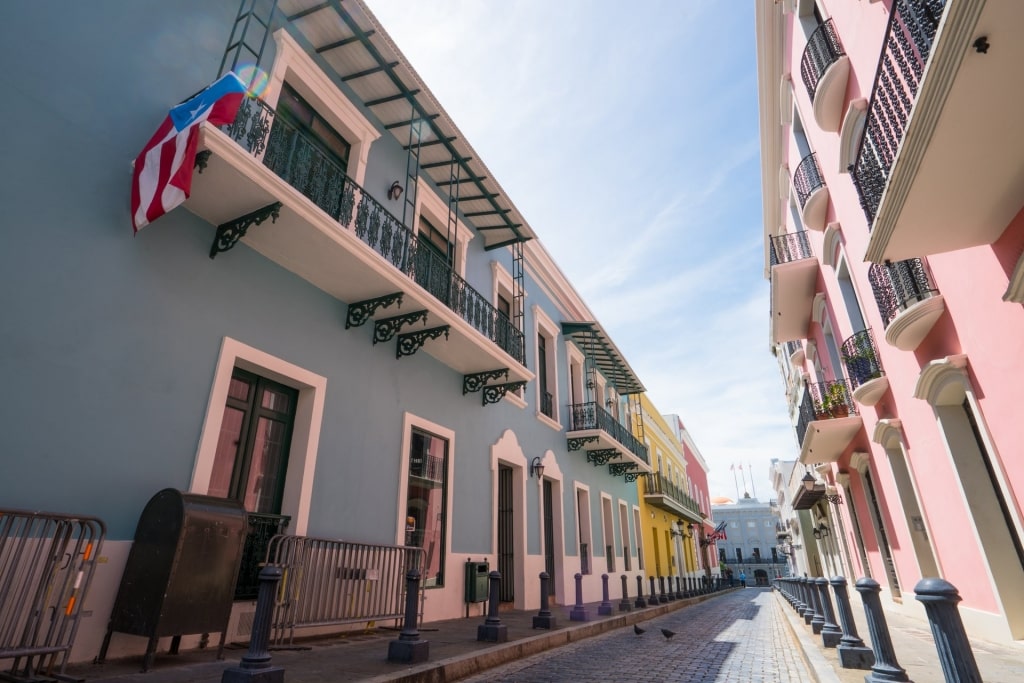
Old San Juan, Puerto Rico
Sail to the sun-drenched Southern Caribbean on a round-trip cruise from Fort Lauderdale of 8, 10, or 11 nights. You’ll sail either on Celebrity Eclipse, perfect for this setting with its lush Lawn Club, or the new Celebrity Ascent, with magnificent outdoor spaces in which to soak up the sunshine.
Ports of call, depending on your itinerary, include vibrant Puerto Rico, where an afternoon and evening in port mean you’ll see two faces of charismatic San Juan .
Explore the chunky fortress, Castillo San Felipe del Morro, and the brightly colored streets of Old San Juan, or visit the Bacardi distillery to learn about and sample the famous rum.
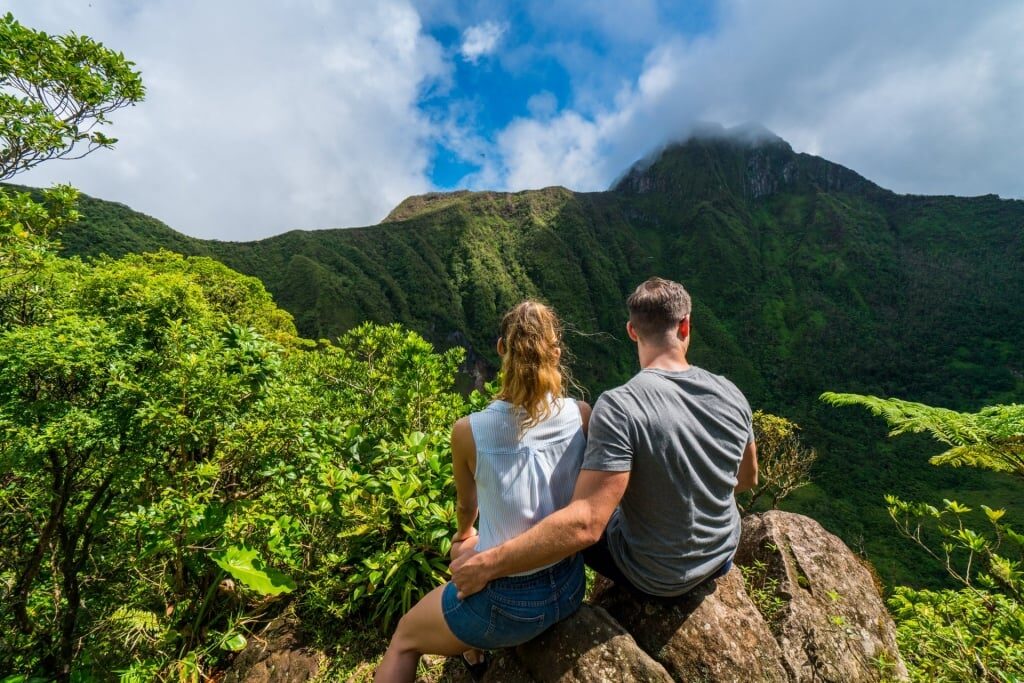
Mount Liamuiga, St. Kitts
You’ll find plenty of military history at St. Kitts , like the rugged Brimstone Hill Fortress, a massive compound built by the British in 1690. This tiny island packs a real punch, with an enormous variety of things to do.
Some of the best things to do in St. Kitts include trundling through the sugarcane fields on a scenic train journey, or hiking Mount Liamuiga, a dormant volcano at the island’s center.
Learn how to make your own gourmet truffles at a chocolate workshop. Visit neighboring Nevis to see the birthplace of Alexander Hamilton, one of the founding fathers of the U.S.
In St. Thomas , you’ll find it impossible to resist exploring the crystal-clear water via snorkeling, kayaking, or sailboat. For an afternoon basking on the gorgeous Honeymoon Beach, the lush, low-key island of St. John is an easy hop across the water.
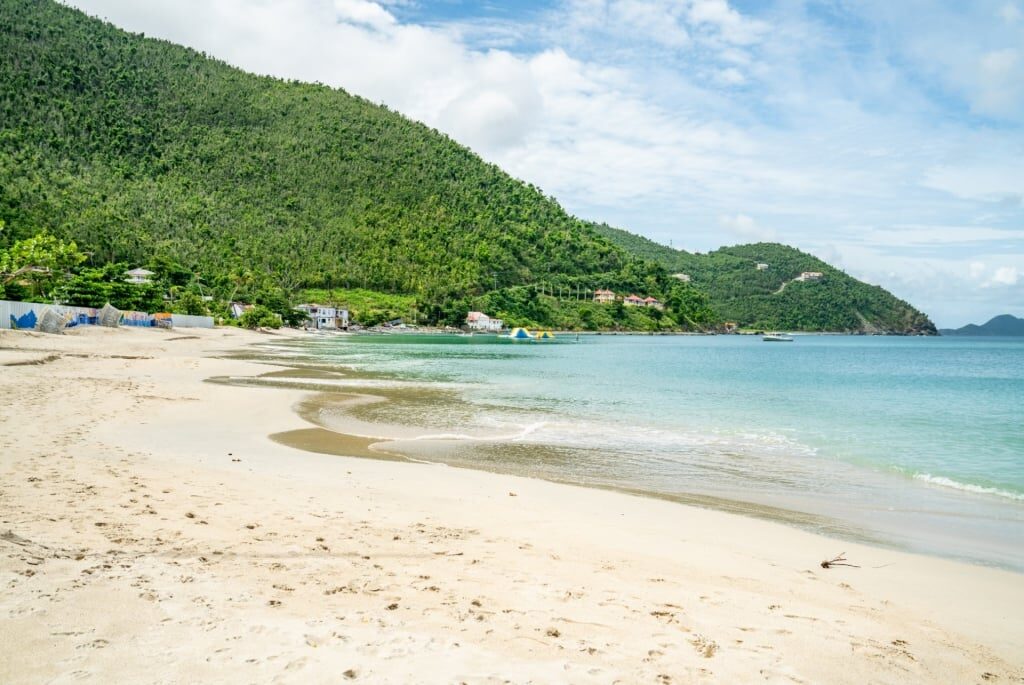
Tortola, British Virgin Islands
Some itineraries include Tortola in the British Virgin Islands . Take a boat trip to sleepy Virgin Gorda and splash around at The Baths, where giant tumbled boulders conceal shady caves and shallow lagoons.
In Barbados, bask on the beautiful beaches of the Platinum Coast, where you can swim among wild sea turtles. Or explore Bridgetown, which is packed with high-end shops and art galleries.
Antigua, too, is famed for its beaches, like the wide sweep of Dickenson Bay. For history buffs, visit Nelson’s Dockyard, built in the early 18th century and beautifully preserved.

If your cruise takes you to St. Lucia, prepare to be awed by the twin peaks of the Pitons, ancient volcanic plugs draped in lush rainforest. From Soufriere, you can explore bubbling sulfur springs and wallow in a natural mud pool with healing properties.
Adventure lovers should pick an itinerary that includes Puerto Plata in the Dominican Republic. Here, you can swim in natural rock pools at the 27 Waterfalls, or fly over the forest on a zipline. For a more serene activity, join a kayaking trip through a manatee reserve, looking out for these gentle mammals.
Browse Southern Caribbean itineraries
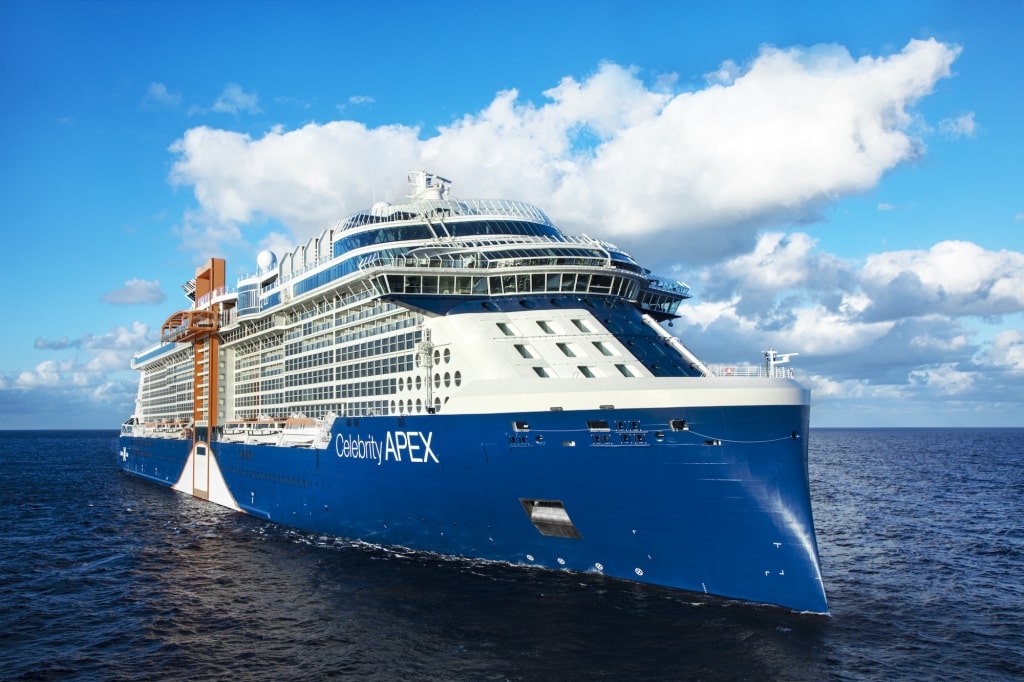
Celebrity Apex
Start planning your closed-loop cruise today and browse cruise itineraries on our website.
Sue has been writing about cruising for 20 years and is lucky enough to have sailed all seven continents. She lives in London, where she is cruise editor of The Times and The Sunday Times newspapers, as well as a freelance contributor to magazines and websites worldwide.
Related Itineraries
Bahamas Getaway
- 3 nights ON CELEBRITY REFLECTION
- DEPARTING FROM FORT LAUDERDALE, FLORIDA
Key West & Bahamas
- 4 nights ON CELEBRITY REFLECTION
Bahamas & Perfect Day
Bahamas, Mexico & Cayman
- 6 nights ON CELEBRITY BEYOND
Aruba, Bonaire & Curacao
- 8 nights ON CELEBRITY BEYOND
Related Articles
Best 5-Day Cruises
Long Weekend Cruises: Where to Go, What to Do
How to Choose a Cruise Itinerary
10 Types of Cruises You Must Experience at Least Once
Best Cruise Destinations for Kids
Top 9 Best Short Cruises
How to Prepare for Your First Cruise
Cruises vs Resorts: Which Is Best?
How to Choose a Cruise Drink Package
How to Spot Marine Mammals From a Cruise Ship
The Complete Guide to Taking a Cruise With a Toddler
8 Tips for Buying Souvenirs in Port
Free Vacation Planning Services

CALL US 888-751-7804
Sign Up for Special Offers
I would like to receive electronic Promotional messages from Celebrity Cruises Inc. You can unsubscribe at anytime. Please view our Privacy Policy .
- First Name *
- Last Name *
- Email Address *
- Country * Country Afghanistan Albania Algeria American Samoa Andorra Angola Antigua and Barbuda Argentina Armenia Australia Austria Azerbaijan Bahamas Bahrain Bangladesh Barbados Belarus Belgium Belize Benin Bermuda Bhutan Bolivia Bosnia and Herzegovina Botswana Brazil Brunei Bulgaria Burkina Faso Burundi Cambodia Cameroon Canada Cape Verde Cayman Islands Central African Republic Chad Chile China Colombia Comoros Congo, Democratic Republic of the Congo, Republic of the Costa Rica Côte d'Ivoire Croatia Cuba Curaçao Cyprus Czech Republic Denmark Djibouti Dominica Dominican Republic East Timor Ecuador Egypt El Salvador Equatorial Guinea Eritrea Estonia Ethiopia Faroe Islands Fiji Finland France French Polynesia Gabon Gambia Georgia Germany Ghana Greece Greenland Grenada Guam Guatemala Guinea Guinea-Bissau Guyana Haiti Honduras Hong Kong Hungary Iceland India Indonesia Iran Iraq Ireland Israel Italy Jamaica Japan Jordan Kazakhstan Kenya Kiribati North Korea South Korea Kosovo Kuwait Kyrgyzstan Laos Latvia Lebanon Lesotho Liberia Libya Liechtenstein Lithuania Luxembourg Macedonia Madagascar Malawi Malaysia Maldives Mali Malta Marshall Islands Mauritania Mauritius Mexico Micronesia Moldova Monaco Mongolia Montenegro Morocco Mozambique Myanmar Namibia Nauru Nepal Netherlands New Zealand Nicaragua Niger Nigeria Northern Mariana Islands Norway Oman Pakistan Palau Palestine, State of Panama Papua New Guinea Paraguay Peru Philippines Poland Portugal Puerto Rico Qatar Romania Russia Rwanda Saint Kitts and Nevis Saint Lucia Saint Vincent and the Grenadines Samoa San Marino Sao Tome and Principe Saudi Arabia Senegal Serbia Seychelles Sierra Leone Singapore Sint Maarten Slovakia Slovenia Solomon Islands Somalia South Africa Spain Sri Lanka Sudan Sudan, South Suriname Swaziland Sweden Switzerland Syria Taiwan Tajikistan Tanzania Thailand Togo Tonga Trinidad and Tobago Tunisia Turkey Turkmenistan Tuvalu Uganda Ukraine United Arab Emirates United Kingdom United States Uruguay Uzbekistan Vanuatu Vatican City Venezuela Vietnam Virgin Islands, British Virgin Islands, U.S. Yemen Zambia Zimbabwe

STAY IN THE KNOW
Thank you for subscribing.
See you on board soon.

An official website of the United States government
Here’s how you know
Official websites use .gov A .gov website belongs to an official government organization in the United States.
Secure .gov websites use HTTPS A lock ( Lock A locked padlock ) or https:// means you’ve safely connected to the .gov website. Share sensitive information only on official, secure websites.
- Border Security
Western Hemisphere Travel Initiative
Western Hemisphere Travel Initiative (WHTI) is the joint Department of State (DOS) and Department of Homeland Security (DHS) plan to implement a key 9/11 Commission recommendation and the statutory mandates of the Intelligence Reform and Terrorism Prevention Act of 2004 (IRTPA). IRTPA, in part, required the DHS and DOS to develop and implement a plan to require all travelers, U.S. citizens and foreign nationals alike, to present a passport or other acceptable document that shows identity and citizenship when entering the United States.
What is the goal of requiring secure documents?
The goal is to strengthen border security while facilitating entry into the United States for U.S. citizens and legitimate international travelers, making the process more efficient and convenient.
What types of documents are accepted for entry into the United States via air?
- U.S. citizens can present a valid: U.S. Passport; Trusted Traveler Program card (NEXUS, SENTRI or FAST); U.S. Military identification card when traveling on official orders; U.S. Merchant Mariner document when traveling in conjunction with official maritime business. Note that children are also required to present their own passport when traveling by air. (note: The Indian/tribal card can NOT be used for air travel).
- Requirements for lawful permanent residents of the United States are not changed by the implementation of WHTI. Lawful permanent residents must continue to present a valid Permanent Resident Card. A passport is not required.
What types of documents are accepted for entry into the United States via land and sea?
- U.S. citizens can present a valid: U.S. Passport; Passport Card; Enhanced Driver’s License; Trusted Traveler Program card (NEXUS, SENTRI or FAST); U.S. Military identification card when traveling on official orders; U.S. Merchant Mariner document when traveling in conjunction with official maritime business; or Form I-872 American Indian Card, or (when available) Enhanced Tribal Card.
- U.S. and Canadian citizen children under the age of 16 (or under 19, if traveling with a school, religious group, or other youth group) need only present a birth certificate or other proof of citizenship. The birth certificate can be original, photocopy, or certified copy.
- WHTI does not affect U.S. Lawful Permanent Residents, who are still required to present their permanent resident card (Form I-551) or other valid evidence of permanent residence status.
- Canadian citizens can present a valid passport, Enhanced Driver’s License, or Trusted Traveler Program card (NEXUS, SENTRI or FAST).
- Bermudian citizens are required to present a valid passport.
- Mexican citizens, including children, are required to present a passport with visa, or a Border Crossing Card.
- U.S. citizens on closed-loop cruises (cruises that begin and end at the same U.S. port) are able to enter the United States with a birth certificate and government-issued photo ID. Please be aware that you may still be required to present a passport to enter the countries your cruise ship is visiting. Check with your cruise line to ensure you have the appropriate documents.
What is an enhanced driver’s license?
State-issued enhanced drivers licenses (EDLs) provide proof of identity and U.S. citizenship, are issued in a secure process, and include technology that makes travel easier. They provide travelers with a low-cost, convenient alternative for entering the United States from Canada, Mexico or the Caribbean through a land or sea port of entry, in addition to serving as a permit to drive.
The Department has been working with states to enhance their driver’s licenses and identification documents to comply with travel rules under the Western Hemisphere Travel Initiative (WHTI), effective June 1, 2009.
How do I get a passport?
United States citizens can visit the State Department’s travel website or call the U.S. National Passport Information Center at 1-877-487-2778; TDD/TTY: (888) 874-7793.
What if I don’t have the required documents when I travel to or return to the United States?
Travelers without WHTI-compliant documents are likely to be delayed at the border as CBP officers work to verify identity and citizenship.
More About Western Hemisphere Travel Initiative
- WHTI Air Frequently Asked Questions (CBP.gov)
- WHTI Land and Sea Frequently Asked Questions (CBP.gov)
- Western Hemisphere Travel Initiative (CBP.gov)
- Customs and Border Protection (CBP)

- Destinations
- Cruise & Travel Blog
- Group Cruises
- Luxury Cruises
- River Cruises
- Specialty Cruises
- World Cruises
- All Cruise Lines
- Best Price Guarantee
- Advanced Cruise Search
Closed Loop Cruise: Passport Requirements & Destinations
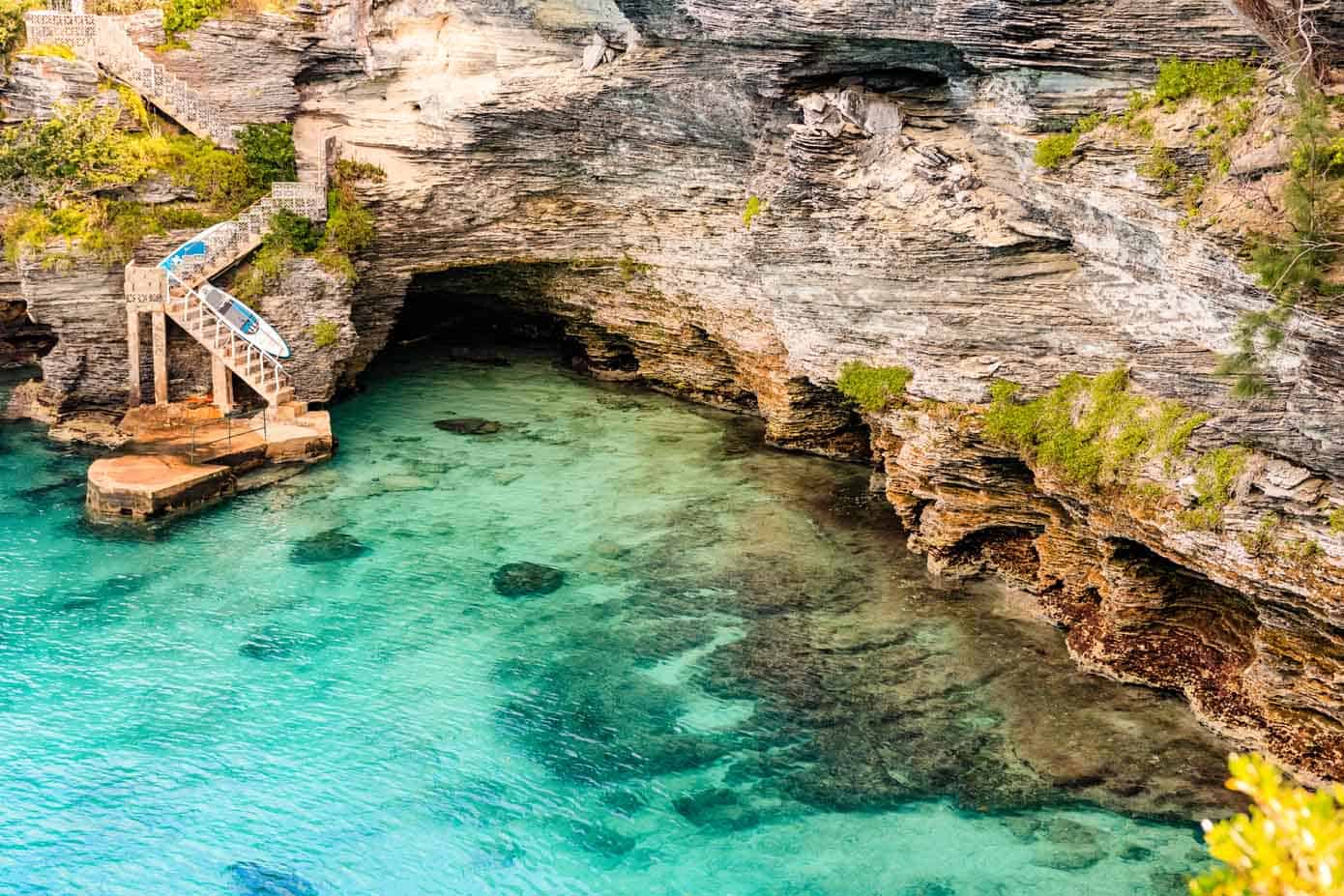
Got a few free days and looking to go on a trip, but don’t have a passport? Don’t worry, you still have plenty of options! If you passport has expired, or you never got a passport in the first place, you are still able to visit several foreign countries as a U.S. citizen. The answer to your “problem” is a closed loop cruise.
These types of cruises allow you, as an American, to sail to amazing destinations without a passport. Below, we take a look at what closed loop cruises are and tell you exactly which places you can visit on a closed loop cruise.
What Is a Closed Loop Cruise?
First things first, though—what is a closed loop cruise? The answer is right there, in the name. Closed loop cruises have “closed” itineraries, meaning that they start and end in the same U.S. port. On the way, however you may visit some other destinations, whether within the United States or in other countries. All closed loop cruises are round-trip cruises from the same port in the United States.
Places You Can Go on a Closed Loop Cruise (Without a Passport)
Even though closed loop cruises can’t take you wherever you want to go, the destination choices may be more diverse than you’d expect. From the beaches of the Bahamas to the wilderness of Alaska, these are the greatest place you can visit on a closed loop cruise without a passport.
Explore the rugged coasts of Alaska on a closed loop cruise from cities like Seattle and San Francisco . Visit the historic coastal towns of Skagway, Sitka and Juneau, and see iconic wildlife, from orcas and whales to brown bears and bald eagles.
Cruise around the Hawaiian Islands and soak up that glorious tropical sunshine. See waterfalls and rainbows, enjoy amazing Polynesian food and hit the waves on a surfboard. Cruises to Hawaii start in most major West Coast cities, such as San Diego , Los Angeles and Seattle.
New England and Eastern Canada
Discover the rocky coasts of New England and eastern Canada on a closed loop cruise from Boston or New York City. Indulge in world-class seafood, see beautiful lighthouses, visit seaside villages and explore important historic sites.
One of the most accessible tropical islands from the U.S. East Coast, Bermuda is a popular destination for closed loop cruises. You can visit this gorgeous, historic island on round-trip cruises from Boston and other East Coast ports. Swim with dolphins , visit the Royal Navy Dockyard or scuba dive to a shipwreck.
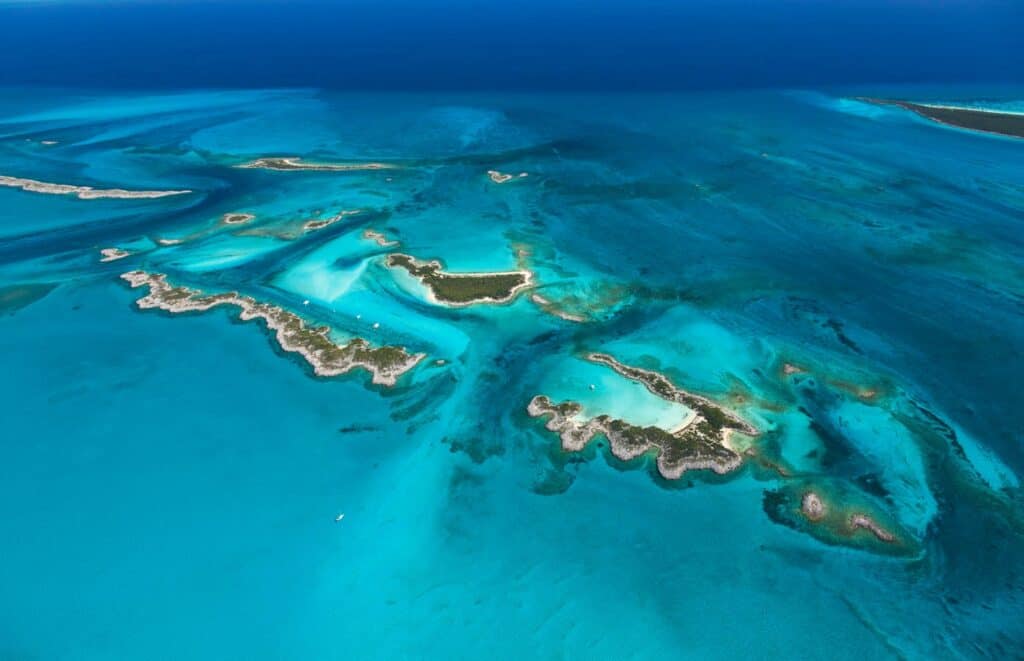
The Bahamas
Blessed with near-perpetual sunshine and stunning beaches, the Bahamas are one of the world’s most popular cruise destinations. As a Caribbean island nation, it’s an excellent place to visit without a passport on closed loop cruises. Departure ports include Baltimore , Charleston, Jacksonville, Miami and other southeastern U.S. cities.
The Caribbean
Comprised of the Western, Eastern and Southern Caribbean Island, the greater Caribbean region is home to some of the greatest beach destination on the planet. Go on a closed loop cruise from Florida and visit such stunning islands as St. Lucia, Barbados, the U.S. Virgin Islands, Martinique and Bonaire. Remember, however, that some of these island nations may require you to have a passport to enter.
Whether it’s a Baja California cruise from San Diego or L.A., or a cruise to Cozumel from the East Coast, Mexico is a great closed loop cruise destination. Discover ancient temples and architecture, sample classic Mexican cuisine, sunbathe on amazing beaches and partake in endless outdoor adventures. Check out the best time to cruise to Mexico here .
So, for example, you can board a cruise ship in Miami, Florida , stop at least one foreign port in places like Mexico, the Bahamas or the Caribbean, and return to the port of Miami afterwards. This is a closed loop cruise. As a U.S. citizen, you will not need a valid passport to leave and re-enter the United States this way.
If, however, you depart from Miami, sail through the Panama Canal , visiting a foreign port on the way, and disembark in Los Angeles, you have not been on a closed loop cruise, even though both your departure and arrival ports are in the United States. These kinds of one-way cruises require all passengers to have a valid passport.
Good to know: Maritime laws state that cruise ships not sailing under the American flag must stop in at least one port of call outside the United States. Great examples of this include a stop in Canada on Alaska cruises , a stop in Bermuda on a round-trip from Boston, or a stop in Cozumel from Fort Lauderdale.
Remember: The start and end point of your cruise must be the same U.S. port.
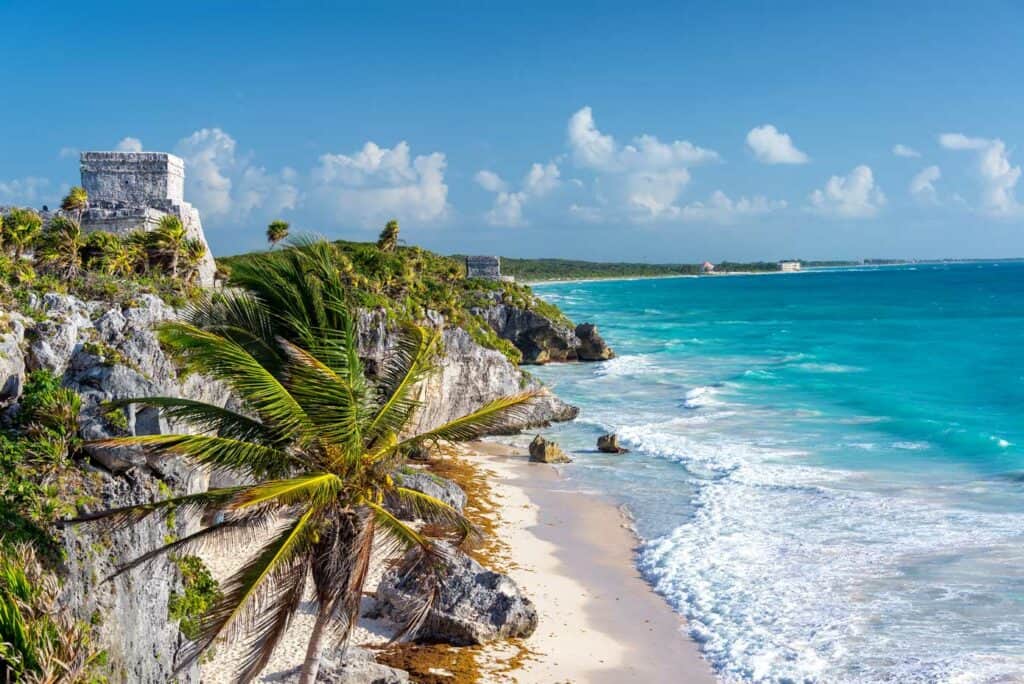
Do I Need a Passport on a Closed Loop Cruise?
American citizens do not need a passport to go on a closed loop cruise. They can leave and re-enter their own country without a passport. However, it is important to know that another proof of citizenship will be required instead.
According to the U.S. Customs and Border Protection Information Center , other valid proofs of citizenship you can use to go on closed loop cruises besides a passport are:
- Enhanced Driver’s License (EDL);
- Government-issued birth certificate; or
- Government-issued certificate of naturalization
If you’re 16 or older, you will also need a valid government-issued driver’s license or picture ID that contains your photo, name and date of birth.
U.S. citizens younger than 16 may use an original, notarized or certified copy of their birth certificate to go on a closed loop cruise. They do not need other documents to leave and re-enter the USA.
Note, however, that this does not necessarily mean that the countries on your itinerary, especially in the Caribbean, won’t still require you to have a passport to enter. If that’s the case, your cruise line might already require you to have a passport to board the ship—even if U.S. Customs and Border Protection does not.
If you aren’t sure, please ask your cruise line about this in advance. A closed loop cruise refers only to U.S. immigration regulations and passport requirements for U.S. citizens. It does not reflect those of the destinations on the closed loop cruise.
How Do I Know If My Cruise Is Closed Loop?
This is pretty straightforward. As we’ve mentioned above, a closed loop cruise is a cruise that departs from and returns to the same port in the United States. It’s really that simple.
Get a price on a cruise in this post
Born and raised in Belgium, Bram is currently based in the Pacific Northwest where he spends his days blogging, hiking, indulging in freshly roasted coffee and sipping craft beers. An experienced traveler, his… More about Bram R
Keep reading
Limited time cruise deals, princess: up to 40% off and more.

Norwegian: FREE Prepaid Gratuities

Fill out the form below to get a quick, free quote
- Name * First Last
- Do you have an agent you’ve worked with or are working with at Cruise Travel Outlet?
- How many passengers? * Please select one: Number of passengers: 1 2 3 4 5 or more
- Where are you in the booking process? * Please select one: I am... Still gathering information Looking for pricing Ready to book
- What type of cabin? *
- Preferred travel date *
- More Information Please tell us about the cruise or deal you're interested in. Be specific if you can.
- Get the latest hand-picked cruise deals and discounts delivered to your inbox.
- I agree to the privacy policy .
- Comments This field is for validation purposes and should be left unchanged.
Comments (0)
Whoops! No comments yet. Start the conversation!.
Join the conversation
Submit a comment today.
You don't have to wait for a passport to travel: What to know about closed-loop cruises

When Chanel Sims graduated college, her mom rewarded her achievement by treating her daughter to a trip with Carnival Cruise Line .
But the July 2022 sailing – shortly after her graduation in May – didn’t leave Sims much time to get a key travel document: her passport.
Sims, now 24, had never gotten one. She tried once before to study abroad but was dissuaded by long wait times , and traveling internationally for fun wasn’t on her radar.
“I was a broke college student. I wasn’t going anywhere,” said Sims, who lives in Los Angeles and works for a life insurance agency.
Luckily for her, there was an alternative: She sailed with her family from Miami to the Bahamas, Turks and Caicos and back with just her photo ID and birth certificate.
In many cases, travelers can sail without a passport on round-trip voyages from the U.S. Here’s what to know.
What is a closed-loop cruise?
Closed-loop cruises are those that start and end at the same U.S. port and travel within the Western Hemisphere.
U.S. citizens booked on those sailings can leave and enter the country with proof of citizenship such as a birth certificate and – if 16 or older – a government-issued photo ID, according to U.S. Customs and Border Protection .
They can also use an enhanced driver’s license , which denotes both proofs of identity and citizenship, though those are available only in Michigan, Minnesota, New York, Vermont and Washington for now. Travelers can reenter the country from Canada, the Caribbean and Mexico with an EDL, but the documents are valid for border crossings only by sea or land.
Travelers under 16 can show an “original, notarized or certified copy of his or her birth certificate, a Consular Report of Birth Abroad issued by Department of State, (DOS) and/or Certificate of Naturalization issued by U.S. Citizenship and Immigration Services (USCIS),” according to Customs and Border Protection’s website.
Cruise lines may require you to have a passport anyway, however.
Regent Seven Seas Cruises, for example, requires passports for all voyages no matter the ports of call or countries visited, and destinations may call for them as well.
Carnival, which Sims sailed with, allows U.S. citizens to sail without a passport on qualifying cruises but "highly recommends that all guests travel with a passport valid for at least six months beyond completion of travel," according to its website .
How do I know if I can sail without a passport?
Cruise lines typically provide guidance for travelers on the requirements of their sailing, according to Drew Daly, senior vice president and general manager of travel agency franchise Dream Vacations. A travel adviser can also help fill in any blanks.
Cruising without a passport can be risky, though. The State Department encourages having one "in case of an emergency, such as an unexpected medical air evacuation or the ship docking at an alternate port," according to its website .
If travelers get stuck at a port of call, there will be “a lot of red tape you have to get through” to make it home without one, Daly said.
In those cases, they should contact the U.S. Embassy and local immigration authorities, he said. Daly also recommended taking a photo of your government IDs, which can be helpful backups when dealing with officials.
A travel adviser can hold travelers’ hands through the process, though Daly noted “it’s not something that happens a lot.”
Sims, for her part, was able to easily get off the ship at ports like Nassau with just her Sail & Sign card, she said, which acts as both a room key and means of charging items to your onboard account. After showing her birth certificate and photo ID during the initial boarding process, she kept them in a suitcase.
There are other advantages to having a passport. For instance, the document gives travelers who don't board their cruise in time more flexibility to meet the ship at its next stop. “You can’t fly to Mexico without a passport,” Daly said.
Routine processing of passports currently takes between 10 and 13 weeks, and seven to nine weeks for expedited service, according to the State Department . But most travelers who book with Dream Vacations plan their cruises at least six months out, according to Daly, which should give them plenty of time to get one: “So, we still highly encourage that.”
Nathan Diller is a consumer travel reporter for USA TODAY based in Nashville. You can reach him at [email protected] .

Ever Heard of a Closed-Loop Cruise? Here’s What to Know About These Unique Sailings
A lesser-known rule allows u.s. travelers to sail to some international destinations without a passport as long as they are on what is known as a “closed-loop cruise.”.
- Copy Link copied

You don’t need a passport to sail through Canadian ports en route to Alaska as long as you start and end your cruise at the same U.S. port.
Photo by Heather Shevlin/Unsplash
A closed-loop cruise is a cruise that departs from and returns to the same U.S. port and remains in the Western Hemisphere. As such, it does not require the passengers to have a U.S. passport—even if the itinerary visits some international ports along the way.
According to U.S. Customs and Borders Protection (CBP), rules established by the Western Hemisphere Travel Initiative require that U.S. citizens who are traveling abroad hold a valid passport—unless they are on a closed-loop cruise. Those sailing on a closed-loop cruise can enter or leave the country with an alternative proof of citizenship, such as a government-issued driver’s license or birth certificate.
If your sailing does not end at the same port where you began—for instance, if you are thinking of booking a one-way Panama Canal itinerary from San Diego, California, to Miami, Florida—you will need a passport. And be aware that some Caribbean islands (more on this in the Caribbean listing below) do require a passport, which means your cruise line will require a passport before you board the ship if you are sailing to a destination that independently requires it.
Do kids need a passport for a closed-loop cruise?
Kids do not need a passport if they are sailing on a closed-loop cruise. If there is a passport requirement, each person in your party needs to have a passport, including infants and toddlers. All cruises throughout the world that sail in destinations outside the United States and that are not closed-loop cruises require a passport.
What form of I.D. do you need for a closed-loop cruise?
If you are on a closed-loop cruise that begins and ends at the same port in the United States and visits Canada, Mexico, or much of the Caribbean, you do not need a valid passport. According to CBP, all you need is documentation proving you are a U.S. citizen. In lieu of a passport, you can present these alternative documents on a closed-loop cruise:
- Enhanced driver’s license, which is a state-issued driver’s license that provides proof of U.S. citizenship (currently available only to residents of Michigan, Minnesota, New York, Vermont, and Washington)
- Government-issued driver’s license
- Government-issued birth certificate
- Official certificate of naturalization
Where do closed-loop cruises sail?
Closed-loop cruise itineraries that do not require a passport include:
- Alaska: Cruise to Alaska on closed-loop sailings that typically start and end on the West Coast, stopping in Canada along the way.
- Bahamas: There are numerous closed-loop cruises to the Bahamas from ports up and down the Eastern Seaboard.
- Bermuda: Sail to Bermuda on closed-loop cruises from East Coast ports, including Baltimore, Boston, New York City, and Port Canaveral, Florida.
- Canada: You can sail round-trip to Canada on a closed-loop cruise from Boston, New York, and New Jersey.
- Caribbean: Start and end your Caribbean sailing in ports like Miami, Fort Lauderdale, or Tampa in Florida; Mobile, Alabama; New Orleans; or Galveston, Texas. Keep in mind that some islands—including Martinique, Guadeloupe, Barbados, Trinidad and Tobago, and St. Bart’s—do require a passport.
- Mexico: Sail down to Mexico on a closed-loop western Caribbean cruise from Florida ports, New Orleans, or Galveston, or to the Pacific side of Mexico to destinations such as Cabo San Lucas, Puerto Vallarta, and Mazatlán from California ports—without a passport. Belize and Honduras, which are sometimes included on these itineraries, also waive their passport requirements for cruise ship passengers.
The risks of not bringing a passport on a closed-loop cruise
Even though a passport is not required on a closed-loop cruise, there’s a reason why cruise lines often strongly encourage passengers to bring a passport. While you are in a foreign port, if you run into any problems and need to cut your trip short and fly home, you will need a passport to fly back into the United States—passports are required for international air travel. It can also be an issue if you miss your embarkation due to a flight cancellation or delay and need to fly to an international port of call to catch up with your cruise.


- Food & Drink
- How to Plan
- Shore Excursions
- Onboard Activities
- What to Expect
Places to Cruise Without a Passport
By Carnival Cruise Line
The Bahamas
New England and Canada
- The Caribbean
Baja, Mexico
As luck would have it, you’ve suddenly got a few open days in your schedule and a yearning to travel somewhere exotic. Don’t let your lack of a passport stop you. Consider a cruise . If you take closed loop cruises (meaning your trip begins and ends at a U.S. port), you can sail to a variety of dreamy destinations as a U.S. citizen without a passport.
For “closed-loop” cruises, U.S. citizens will need to provide:
- A boarding pass
- A government photo I.D. if 16 years of age or older
- And a certified birth certificate or certificate of U.S. naturalization
Starting and ending in Seattle or San Francisco, an Alaskan cruise takes you to charming waterfront cities and villages like Juneau, Skagway and Ketchikan. In Alaska, also known as the Land of the Midnight Sun, you can see spectacular, icy glaciers by boat or seaplane, watch for whales and try your hand at dog sledding.
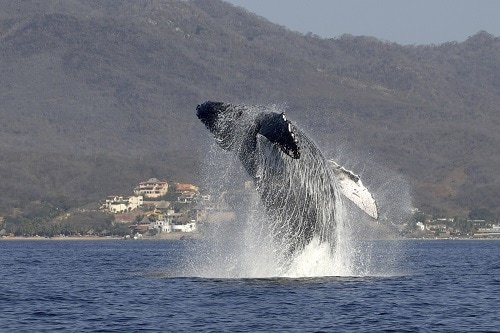
A stop in Victoria, British Columbia offers a whole new set of adventures. Visit castles, take a ride on a horse-drawn trolley, stroll through beautiful Butchart Gardens or get your fill of shopping and dining downtown. When you arrive back in Seattle or San Francisco, take time to explore those cities for even more vacation fun.
You can cruise to The Bahamas from a number of U.S. ports along the Atlantic Coast. Located just southeast of Miami in the Atlantic Ocean, The Bahamas offers an ideal island getaway. With soft-sand beaches, vibrant coral reefs, and pastel-colored British colonial architecture , the Bahamian capital of Nassau makes a popular port of call for cruisers. In Freeport , you can shop till you drop at the Port Lucaya Marketplace or kayak through the mangroves at Lucayan National Park. At the south end of the island of Eleuthera, Princess Cays offers island resort living at its finest.
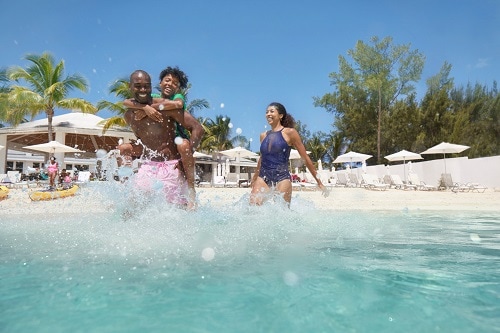
If you’re looking for cruises that don’t require a passport, take a round trip sail to Bermuda from New York City , Baltimore , Charleston or one of two Florida ports of call. As Britain’s oldest colony, Bermuda offers wonderful historic attractions and plenty of opportunities for fun in the sun. Pink-sand beaches, beautiful blue waters and colorful coral reefs deliver the perfect recipe for sunning, swimming, sailing and snorkeling. Cap off a day of adventure in Bermuda with a sunset rum-tasting cruise .
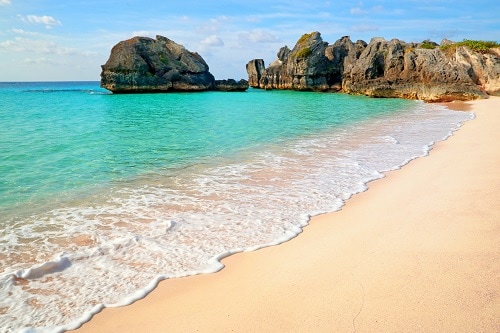
If you’re looking for a different kind of cruise, explore parts of New England and Canada with New York City as an exciting starting and ending point. Spend a day soaking up history in Boston, Massachusetts, and tour the Charles River aboard an amphibious duck vehicle. Experience lighthouses, lobster bakes and craggy sea cliffs in Portland, Maine, and enjoy a trip to Saint John, a beautiful city on the Bay of Fundy in New Brunswick, Canada. A stop in the charming fishing village of Halifax, Nova Scotia offers beautiful gardens, more delicious seafood and double-decker bus tours . After you pull into port in the Big Apple, make sure to see a Broadway show, visit the Empire State Building and take a stroll through Central Park.

The Caribbean
The Caribbean makes a popular destination for travelers considering a tropical cruise. For an easy round trip, you can begin and end in a number of U.S. cities including New York City, Galveston , Mobile , New Orleans and Tampa .
Western Caribbean locales in Mexico like Yucatán and Cozumel deliver exciting attractions, from ancient Mayan ruins to flamingo lagoons, and activities like swimming with dolphins, dune buggy rides, sailing, snorkeling, diving and zip lining.
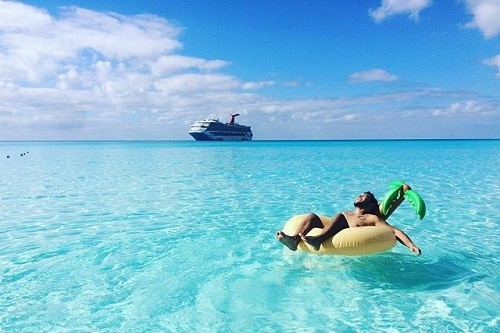
In the Eastern Caribbean, find dream destinations like Amber Cove in the Dominican Republic and Grand Turk in the Turks and Caicos archipelago. In Amber Cove, you can tour the Dominican outback, soak up the sun on Coconut Cove Beach, or ride the Waterfalls of Rio de Damajagua . On Grand Turk, enjoy swimming with stingrays, riding horses along the coast, or touring the island by ATV. The opportunities for adventure on a Caribbean cruise are endless.
When it comes to domestic cruises, nothing beats a trip to Hawaii . Explore beautiful spots spread across Maui , Kauai and the Big Island, and drink in the natural beauty only Hawaii delivers. On this exciting trip, you can deep sea fish for marlin, explore forest caves and waterfalls, soak up the sun on a black-sand beach and attend a traditional luau. U.S. departure ports for enjoyable Hawaiian cruises include San Francisco , San Diego , Long Beach and Honolulu .
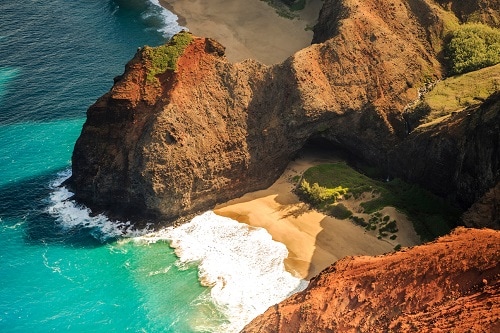
Depart from the Californian cities of San Francisco, San Diego or Long Beach for a quick but memorable cruise to the Baja Peninsula in northern Mexico . Along the way, stop by Catalina Island for a day packed full of outdoor enjoyment . Kayak in and out of secret coves, zip line through the trees or try parasailing. In Ensenada , the “Cinderella of the Pacific,” you can ride horses along mountain trails, tour the wine country, shop for souvenirs and taste the local tequila.
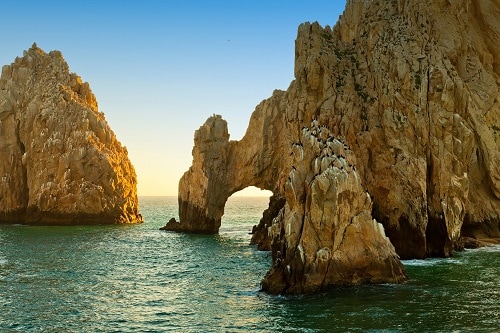
When traveling outside of the U.S. a passport is always recommended, but cruises are the exception to the rule. As long as you book a closed loop cruise, you can travel to certain destinations without a passport. Because international cruises in Europe and Asia require air travel, these vacations also demand a passport. When embarking on adventures by sea that don’t require a passport, make sure you have the proper cruise documentation.
Note: Onboard activities, shore excursions, and dining options may vary by ship and destination.
Related articles
Plan for fun.
https://www.carnival.com/cruise-from.aspx
Protect Your Trip »
Here's when you need (and don't need) a passport to cruise.
It's the type of sailing – closed-loop or open-loop – that largely determines whether or not you need a passport to cruise.
Do You Need a Passport for a Cruise?

Getty Images
A passport isn't always required for cruising.
To determine whether or not you need a passport to cruise, you first need to figure out if the itinerary is closed-loop or open-loop (also known as open-jaw).
Closed-loop cruise: A closed-loop cruise typically doesn't require a passport since it begins and ends in the same U.S. port (though there are some exceptions to this rule).
Example: Royal Caribbean International 's seven-night Western Caribbean & Perfect Day cruise stops in several countries – the Bahamas, Jamaica, Haiti and Grand Cayman – but the itinerary is considered closed-loop because it starts and ends in Fort Lauderdale, Florida.
Open-loop cruise: An open-loop cruise begins in one U.S. port and ends in a different U.S. port.
Example: Carnival Cruise Line 's 16-day Panama Canal from Seattle itinerary is not considered closed-loop because it departs from Seattle and completes its journey in New Orleans.
All of the above regulations have been determined by the Western Hemisphere Travel Initiative: a plan by the departments of State and Homeland Security that determines which documents are acceptable for proving identity and citizenship when entering the United States.
Where to cruise without a passport
There are several destinations where you can cruise without a passport on a closed-loop sailing. They include the following:
- The Bahamas
When looking at cruises to these locations, be mindful of the home ports. The Bahamas, Mexico, Bermuda, the Caribbean and Canada are all foreign ports, which means they only qualify for the passport exception if they are a stop along your cruise itinerary . If the cruise originates in any of these countries, it is likely you will need a passport.
Since Alaska, Hawaii and New England are all U.S. destinations, any closed-loop routes departing from these locations will not require a passport. However, keep in mind that it can be hard to find closed-loop cruises originating in Hawaii or Alaska.
To find closed-loop itineraries for a Hawaiian voyage or Alaskan cruise , try searching for sailings departing from major cities on the West Coast, like Seattle or Los Angeles . By contrast, quite a few closed-loop cruises leave from New England ports, but they are often marketed as Canadian cruises.
Tips on Trips and Expert Picks Newsletter
Travel tips, vacation ideas and more to make your next vacation stellar.
Sign up to receive the latest updates from U.S News & World Report and our trusted partners and sponsors. By clicking submit, you are agreeing to our Terms and Conditions & Privacy Policy .
When you need a passport for closed-loop cruises
Some cruise itineraries include foreign ports that require a passport for disembarkation. This is most commonly an issue for travelers on a closed-loop Caribbean cruise. Barbados , Guadeloupe , Haiti, Martinique , St. Barts , and Trinidad and Tobago all require U.S. citizens to present a valid passport to disembark and enter the country, despite WHTI regulations not requiring a passport for these destinations. Labadee, Royal Caribbean's private island , is an exception and does not require a passport despite its location in Haiti.
If your itinerary includes a country requiring a U.S. passport, your cruise line will require you to have the passport at check-in. Note that your passport must not expire within six months of your arrival in a foreign country or else it won't be considered valid for international travel.
Read: The Easiest Way to Renew Your Passport
Acceptable forms of ID
All travelers – U.S. citizens and foreign nationals alike – must present documents that show identity and citizenship when entering the United States. A U.S. passport can show both. If you don't have one or don't want to bring one, be aware that you may need to present more than one document.
U.S. citizens 16 and older
If you're a U.S. citizen age 16 or older sailing on a closed-loop cruise without your passport, you will need a government-issued photo ID like a driver's license. In addition, you must present a document that proves your U.S. citizenship. These include:
- Passport card
- State-issued enhanced driver's license (EDL)
- Government-issued birth certificate
- Trusted Traveler Program card (NEXUS, SENTRI or FAST)
- American Indian Card (Form I-872) or Enhanced Tribal ID Card
The Trusted Traveler Programs are risk-based programs to facilitate the entry of travelers who have been vetted and preapproved. Most of these programs will provide you with a machine-readable card that allows you to pass through border checkpoints quickly. Keep in mind, some of these IDs are only available to travelers 16 and older.
Read: TSA Precheck vs. Global Entry
U.S. citizens younger than 16
U.S. citizens younger than 16 are only required to present proof of citizenship, such as one of the following documents:
- Original, notarized or certified copy of their government-issued birth certificate
- Consular Report of Birth Abroad issued by U.S. Department of State
- Certificate of Naturalization issued by U.S. Citizenship and Immigration Services
Read: How to Get a Passport for Kids
Non-U.S. citizens
If you are a lawful permanent resident (or LPR) of the United States, you are required to present a permanent resident card or other valid evidence of permanent residence status.
Non-U.S. citizens, with the exception of Canadians and Mexicans, are not subject to passport exceptions, so a valid passport will need to be provided. Canadian citizens can present a valid passport, Enhanced Driver's License or Trusted Traveler Program card. Mexican citizens must present a passport with a visa or a Border Crossing Card.
Unacceptable forms of ID
While most common forms of identification are accepted, there are a few exceptions. U.S. military identification cards and U.S. Merchant Mariner documents are valid forms of identification, but only when traveling on official orders or in conjunction with official maritime business, so it is unlikely they will be accepted when traveling on a cruise.
Here are some other documents that will not be accepted as proof of citizenship:
- Voter registration cards
- Social Security cards
- Baptismal papers
- Hospital certificates of birth (for anyone older than a newborn)
It is important to note that many of the permitted forms of identification, such as a passport card or EDL, are only accepted at land and sea border crossings. Unforeseen circumstances, such as a medical air evacuation, may cause you to return to the U.S. by air travel. In this case, these documents won't be accepted when you try to reenter at the border crossing.
To avoid extra delays in your return to the U.S. following unforeseen travel complications, the Department of State recommends that everyone taking a cruise from the United States carry a valid passport book in case of emergency.
Why Trust U.S. News Travel
Erin Vasta has traveled extensively to international destinations, gaining a deep knowledge of travel regulations in the process. Her expertise in this area has saved her family and friends from unnecessary travel delays and ensured stress-free trips through border security in nearly 15 countries. To write this article, Vasta used her international travel experience and research skills.
You might also be interested in:
- The Top Passport Holders
- Cruise Packing List: Essentials to Bring
- Safe at Sea: The Best Cruise Insurance
Tags: Travel , Travel Tips
World's Best Places To Visit
- # 1 South Island, New Zealand
- # 4 Bora Bora
If you make a purchase from our site, we may earn a commission. This does not affect the quality or independence of our editorial content.
You May Also Like
Whitewater rafting in colorado.
John Rodwan and Ann Henson July 19, 2024

Cruise vs. All-Inclusive Resort
Gwen Pratesi July 18, 2024

Fun Things to Do in South Carolina
Brittany Chrusciel and Keri Lumm July 18, 2024

The Best Parasailing in Miami
Gwen Pratesi July 17, 2024

Amazon Prime Day Luggage Deals
Amanda Norcross July 17, 2024

The Best Aquariums in the U.S.
Sharael Kolberg and Rachael Hood July 16, 2024

Essentials to Pack for a Cruise
Gwen Pratesi and Amanda Norcross July 16, 2024

Vacation Packing List
Rachael Hood July 12, 2024

Top Things to Do in Las Vegas With Kids
Holly Johnson and Amanda Norcross July 12, 2024

Top Christmas Cruises
Gwen Pratesi July 11, 2024


Where Can I Cruise Without A Passport? The Best Closed-Loop Sailings From US Ports.
By: Author Elaine Warren
Posted on Last updated: October 14, 2023
Categories CRUISE PLANNING , Travel Documents
Cruising with a passport will usually be the best option, if you have one. But, sometimes you can’t quite pull it off. Perhaps there is no time to get a new or renewed passport (or perhaps you forgot to bring them at all !). Or, perhaps there are other obstacles to timely acquisition of a passport . You may ask yourself, “Where can I cruise without a passport?” There’s no need to panic! You still have many options for a fabulous vacation! Read on for where you can cruise without doling out money for new passports.
Why You Don’t Need A Passport To Cruise To Some Countries
The Western Hemisphere Travel Initiative (WHTI) agreement entitles all US citizens to travel on closed-loop cruises to a limited amount of international destinations.
A closed-loop cruise is one that departs and returns to the same port U.S. port. So, for instance, all of those round-trip cruises out of Miami and Fort Lauderdale are closed-loop cruises. All closed-loop cruises embark accept any of the following WHTI-permitted forms of US identification: a passport card, Enhanced Driver’s License, Trusted Traveler Program ID (FAST, SENRI, and Nexus), or an I-872 American Indian ID in place of a passport book.
WHTI passport cards are convenient and affordable because you don’t have to travel with your birth certificate and ID.
However, a passport card is only a valid form of identification for a closed-loop cruise. It may not be used for flights to foreign destinations like the Caribbean, Mexico, Bermuda, or Canada. So, if your vacation plans include flying to any of those destinations, you would need a valid US passport book.
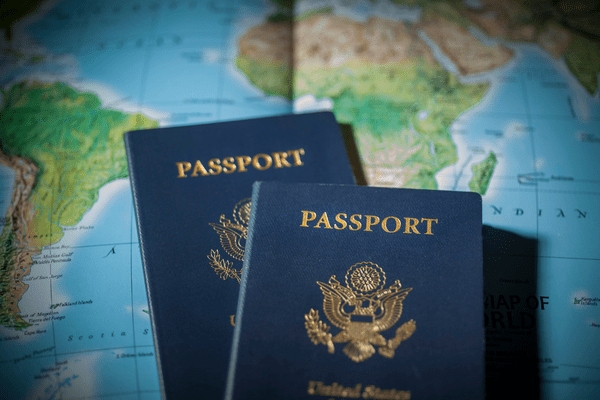
Should you travel with your kids under 16 , they will only need an original or a copy of their birth certificate (preferably certified). Or other forms of identification like a Naturalization Document or a Consular Report of Birth Abroad document.
If you are planning on using any WHTI-approved forms of identification like a birth certificate and driver’s license. Please ensure that the full name on your cruise reservation is the same as your forms of identification. It could delay your boarding process if the variable names don’t correspond.
Most importantly, closed-loop cruise port entry requirements are not set in stone. So, review your travel itinerary in detail. Some Caribbean destinations like Guadeloupe and Martinique require valid US passport books or cards.
The Best Family Cruise Destinations Without A Passport
Now that you know how to conveniently travel to international destinations without the hassle of applying for passports, let’s look at the top travel destinations that are open to you.
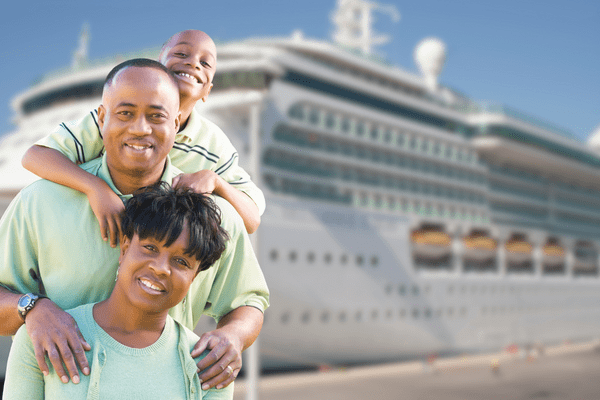
Tropical Caribbean Cruises
With its sun-drenched platinum sandy beaches, aqua-hued balmy waters, fun water sports, and educational activities, the Caribbean is a prime family cruise destination.
There are numerous Caribbean cruise packages to choose from for 3-15 nights from several ports in Florida, Galveston (Texas), New Orleans (Louisiana), Charleston (South Carolina), and New York City, to name but a few.
Carnival cruises are ideal as they cater to families with budget-friendly rates. Although, should you be willing to spend a little bit more for better amenities and fun activities, consider booking a cruise on the Royal Caribbean or a Disney cruise.
While you can use WHTI identification for cruising to most Caribbean nations, especially US islands like Puerto Rico, St Croix, St. Johns, and the St. Thomas islands, it is still advisable to check your itinerary’s port entry requirements. Some Caribbean islands such as St. Martin, Haiti, Guadeloupe and Barbados still have rules that require that visitors carry passports. Also, different rules apply to non-U.S. citizens, including green-card holders and lawful permanent residents.
Cruise To Mexico
With its spectacular tropical beaches, delicious food, and abundance of cultural excursions to ancient Mayan ruins, our southern neighbor, Mexico, is an ideal family cruise destination.
Several 3-15 day closed-loop cruises depart from ports like Miami and Galveston to Mexico’s stunning Pacific and Caribbean coastal regions like Progresso and Cozumel.
Many major cruise line operators like Carnival and Royal Caribbean, offer Mexican Riviera cruises departing from Los Angeles ports all year round.
There are also seasonal Mexico cruises on the Norwegian Cruise Line, Princess, Disney, and Holland America cruise lines that depart from the West Coast.
Cruise To Stunning Hawaii
Many of you may be wondering why we would include Hawaii in this post. Although it is exotic, it is one of the fifty United States and no passport should be required. A cruise that sails exclusively among the individual islands of Hawaii will not require a passport. But, the analysis changes if your ship stops at any non-U.S. ports.
With its outstanding natural beauty, pristine tropical islands, and laid-back coastal living, exquisite Hawaii offers visitors a plethora of fun and cultural family excursions.
So, if Hawaii sounds like the perfect destination, you can choose between two closed-loop cruising options that vary in length.
If you have a limited time, you can fly to Honolulu and embark on a 7–10-night cruise on Norwegian’s Pride of America cruise liner.
A longer, 14-18-night Hawaiian cruise, is offered by Princess, Holland America, and Carnival cruise lines. They depart from ports in Los Angeles, San Francisco, and San Diego. These cruises are longer as they need time to cross the Pacifica Ocean from California.
Although, if you are planning on traveling with WHTI documents, tread with caution regarding 20-night closed-loop cruises to Hawaii with the likes of Viking, Princess, and Holland America.
While they depart and return to the West Coast, their itineraries include South Pacific Island stopovers in locations like French Polynesia that require passports.
Balmy Bahamas Cruises
With its all-year-round sunny tropical climate, friendly locals, and fantastic beaches, the Bahamas are the perfect destination for scuba diving adventures and brightly colored cocktails.
Due to the Bahamas’ proximity to the US East Coast and its popularity, several cruise liners travel from Florida’s eastern ports in Miami, Port Canaveral, Jacksonville, and Fort Lauderdale.
There are numerous 2-15 night closed-loop cruises to choose from. In addition, if you reside in Florida, you may get significant discounts or benefit from other promotional packages.
Most of the more extended Bahamas cruise options stop there on the way to the Caribbean. They depart from ports in Manhattan, Bayonne, Charleston, Baltimore, Galveston, New Orleans, and Tampa.
You can shop around for Bahamas cruises at all the major cruise lines like Royal Caribbean, Norwegian, Carnival, and Disney. In addition, Holland America, Celebrity, and MSC Cruise offer closed-loop cruises to the Bahamas as well.
Canada and New England Cruises
North America’s breathtaking East Coast cruises are steeped in history with panoramic views from Nova Scotia’s rugged cliffs and drenched in Quebec’s fabulously French culture.
Most 7-night closed-loop cruises along the US and Canadian coastline depart from ports in New York City, Brooklyn, Manhattan, Boston, Bayonne, and Baltimore, and infrequently from Norfolk, mainly during the fall, albeit some 8–10-night cruises operate during other times of the year.
There are also several cruise lines, like Royal Caribbean, Norwegian, Carnival, Holland America, and Princess cruises, that also offer East Coast routes, so you can compare their rates to get a great deal.
Why Cruising With A Passport Is Still A Good Idea
Even though you can legally cruise to several prime destinations without a passport, it’s essential in emergency medical evacuations or when your cruise ship is forced to stop over unexpectedly in a port that does not recognize the international WHTI agreement.
Another benefit of having a passport is if you miss your cruise embarkation, you can fly from the US to the ship’s first scheduled port stopover.
And in case of a family or business emergency, you will be permitted to disembark the ship earlier than expected and fly back to the US if you have a valid passport.
In stark contrast, should you not have a passport, you may be stuck in a foreign port and need to apply for a temporary passport to fly back home.
Frequently Asked Questions
So, now that you know the benefits and risks of traveling without a passport, the following information will address any lingering questions you might still have.
Do You Need A Passport For An Alaska Cruise?
Like all the previously mentioned travel destinations, you only need WHTI-certified forms of identification for close-looped cruises to Alaska from San Francisco and Seattle, including ports in Long Beach and Los Angeles, in southern California.
Although, should you travel without a passport, and book shore excursions between Alaska and Canada, like the Yukon Route and White Pass train rides, they will be limited to only 3 hours.
Do You Need A Passport To Go On A Disney Cruise?
Fortunately, you don’t need a passport book to travel to the previously mentioned international destinations on Disney cruises.
While you will need the WHTI-approved identity documents, reviewing your itinerary’s port entry requirements before departure is essential.
Do You Need A Passport To Go To Bermuda On A Cruise?
If you are cruising to Bermuda , you don’t necessarily need a US passport. Instead, you can use the following documents: a US passport card, a Trusted Traveler card (Nexus, SENTRI, or FAST card), or an enhanced driver’s license.
Do I Need A Passport For A Cruise To Cozumel?
Cozumel is one of the most accessible cruise destinations for US citizens. You don’t need a passport to embark on any round-trip cruise, and you can step on board with any government-issued proof of identity document. It’s as easy as that!
Do You Need A Passport To Go To Jamaica On A Cruise?
Even though a US passport is not required to take a cruise to Jamaica. The US embassy advises against traveling without one as it may delay your disembarking process upon your return.

Closing Thoughts
It turns out there are quite a few options for where you can cruise without a passport. Book a closed-loop cruise, and you can cruise to the Caribbean, Bahamas, and Mexico, to name a few. Of course, we always recommend confirming any travel plans and documents required with your chosen cruise line.

Elaine Warren
Founder & Crew Chief
- Visit Facebook account (opens in a new tab)
- Visit LinkedIn account (opens in a new tab)
Keep up with the latest cruise tips and insights! Follow us on Pinterest:
Related articles.


An official website of the United States government
Here’s how you know

Official websites use .gov A .gov website belongs to an official government organization in the United States.
Secure .gov websites use HTTPS A lock ( Lock A locked padlock ) or https:// means you’ve safely connected to the .gov website. Share sensitive information only on official, secure websites.

- Archived Content In an effort to keep CBP.gov current, the archive contains content from a previous administration or is otherwise outdated.
- Local Media Release
CBP reminds Seattle cruise ship passengers of ID requirements
SEATTLE – The cruise industry in Seattle generates an estimated $500 million in business revenue; and U.S. Customs and Border Protection (CBP) in Seattle screens more than a million passengers and crew arriving via cruise ships. With the cruise season at its peak, CBP would like to remind passengers about the identification requirements for returning to the United States.
Cruise vessels arriving from foreign countries at the Port of Seattle must meet the requirements set forth in the Western Hemisphere Travel Initiative (WHTI). Almost all Alaska cruises stop in Victoria, Canada, which constitutes foreign travel.
As a reminder, since June 1, 2009, all U.S. and Canadian citizens 18 years and older, who enter the United States at land and sea ports of entry from within the Western Hemisphere need to present either a government-issued photo ID, such as a driver’s license, as well as proof of citizenship, such as a birth certificate, or a valid passport or other acceptable document for WHTI compliance. U.S. citizens on closed-loop cruises (cruises that begin and end at the same U.S. port) are able to enter the United States with a birth certificate and government-issued photo ID. U.S. and Canadian citizen children ages 16 and under are able to enter with only proof of citizenship, such as a birth certificate. Verbal claims of citizenship alone are not sufficient to establish citizenship for entry into the United States.
Approved WHTI documents for U.S. citizens include: U.S. passports, U.S. passport card, Enhanced Drivers licenses, Enhanced Tribal card, Trusted Traveler Cards (NEXUS, SENTRI, or FAST), or military identification cards (with official orders). A foreign national entering the United States is required to present a passport and valid visa issued by a U.S. Consular official (a visa is not required if they are a citizen of a country eligible for the Visa Waiver Program , a lawful permanent resident of the United States, or a citizen of Canada).
To make your cruising experience more enjoyable, please remember your Alaskan cruise involves foreign travel and plan ahead.
For additional information, please visit www.cbp.gov .
U.S. Customs and Border Protection is the unified border agency within the Department of Homeland Security charged with the management, control and protection of our nation's borders at and between official ports of entry. CBP is charged with securing the borders of the United States while enforcing hundreds of laws and facilitating lawful trade and travel.
What Is A Closed-Loop Cruise And Do You Need To Pack Your Passport?
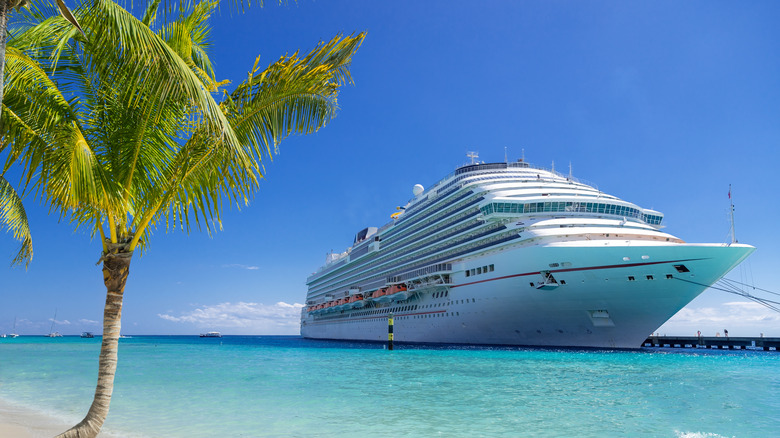
Travel by train, vehicle, or airplane has its perks, but adventurers looking for time on the waves often choose to cruise instead. Luxury and fun on the high seas continue to be something that increasingly appeals to travelers worldwide. It's projected that by 2028, the global cruise market will become an industry worth over $15 billion.
Some of this market growth can be attributed to the cruise industry's commitment to customized sailing. Travelers have more options than ever when it comes to themed cruises designed to focus on health, adventure, or family fun. Travelers can also enjoy a variety related to the type of cruise they book with ocean cruises, river cruises, and casual, and luxury experiences alike all readily available.
Over 30 million passengers globally choose to cruise each year. While the Caribbean and the Bahamas top the list of popular destinations, the Mediterranean follows closely behind, as well as Alaska, Australasia, and mainland Europe.
There are currently more than 2,000 ports worldwide for travelers to explore. However, before boarding a ship with international destinations on the itinerary, it's likely the right identification is required. The U.S. Department of State Bureau of Consular Affairs recommends all travelers departing from the U.S. have a passport book in hand.
The exception to this rule is the closed-loop cruise. Ships within this category must satisfy strict regulations to achieve closed-loop status. Once they do, it's a cruise option that can be a viable solution for those who aren't passport holders.
A route to cruising passport-free
U.S. Customs and Border Protection defines a closed-loop cruise as one that both begins and ends at the same U.S. port. As long as these cruises return to the place they started, they can cruise to destinations such as islands and territories that are within proximity to the continental United States. These destinations often include Canada, Mexico, Bermuda, and the Caribbean.
There are some real advantages for travelers booking a closed-loop cruise. Because these cruises start and end at the same port, those flying in to board their ship can easily book round-trip flights. Passengers driving in will find that options to park directly at the point of departure can make the trip that much more convenient.
Additionally, U.S. travelers on closed-loop cruises won't typically have to worry about having a passport to enjoy the experience. Instead, U.S. Customs and Border Protection allows U.S. citizens 16 and older to enter and leave the country using alternative proof of citizenship. Approved forms of identification include a birth certificate or a government-issued photo ID, with additional documentation requirements in place for travelers 16 and under.
Closed-loop cruise considerations to keep in mind
Exploring Alaska, Mexico, Grand Cayman, the Caribbean , or the Bahamas on a closed-loop cruise can be thrilling. It can also be a convenient option when passport-free travel is a priority. That said, there are always important exceptions to consider when it comes to passport requirements and a closed-loop cruise is no different.
A prime example would be if a closed-loop cruise stops at a port of entry on the island of Martinique. This destination requires all U.S. citizens to hold a valid passport to enter the country. Passengers without a passport would be required to stay onboard the ship at this point in the cruise which could put a damper on the fun if it's something unexpected.
Another consideration to keep in mind is that it is cruise line policy to depart on time at all times. Passengers who don't keep track of the ship schedule while exploring ports of call face the real possibility of being left behind. When this happens, passengers are responsible for flying themselves home or to the next port of call. Unlike closed-loop cruises, airlines do require passports for international travel, which can prove to be a difficult scenario for those cruising without this form of identification.
For those without a passport, a closed-loop cruise can be a great option. Simply make sure to double-check your itinerary and the U.S. Department of State website before departure. This will ensure setting sail is as stress-free as it should be.
This is a privately owned website and not a government agency. FTC Disclosure: We may be compensated if you make a purchase via a link on this site.
Uspassporthelpguide.com is a privately owned website. Privacy
What is a Closed Loop Cruise?
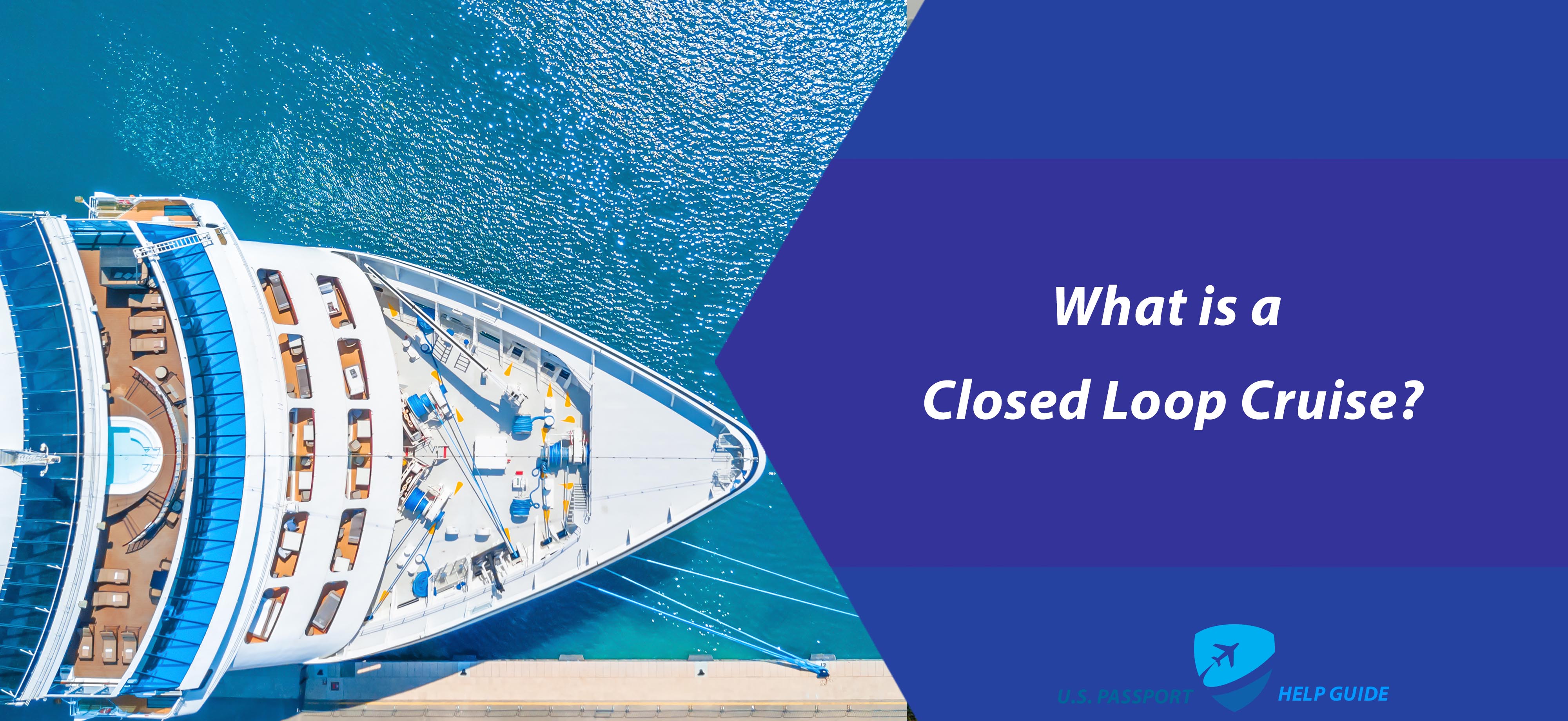
The process of going on a cruise brings along with it a wide variety of different implications that many people don’t think about. When you go on a cruise, you are typically doing so through various types of international waters worldwide. As a result, the United States Customs and Border Patrol will treat the voyage the same way you would if you traveled internationally by plane, for example – and you will have to go through the same process.
TABLE OF CONTENTS
What is a Closed-Loop Cruise?
A very specific type of cruise, however, is a “closed-loop voyage.” It has several benefits that frequent travelers and cruise fans want to know about. As the name suggests, a closed-loop voyage or cruise begins and ends in the United States. As a result, the process is much more straightforward if you are traveling internationally via cruise ship and are staying in one place for a long period.
Closed Loop Cruise Orginates and Ends in the US
The official definition of a closed-loop voyage originates and ends in the United States. However, it can visit contiguous territories or islands that are adjacent to the continental US at any time.
However, it’s important to note that for a cruise to be “closed-loop,” it must begin and end in the same port. Leaving the East Coast and returning to the West would not meet those requirements.
Related: Do You Need a Passport to Go to Mexico? [2023]
Do You Need a Passport for a Closed Loop Cruise?
Are you planning a closed-loop cruise and wondering whether or not you need a passport? The answer to that depends on a few factors. Generally, you do not need a passport if you are a US citizen and the cruise departs and returns to the same US port.
However, if the cruise stops at foreign ports, you may need a passport to enter those countries. Additionally, some cruise lines may require a passport as a form of identification for boarding, even if it is not technically needed for the itinerary. It’s always best to check with your cruise line and the countries you visit to confirm their passport requirements.
Contiguous Territories: What is the Contiguous Rule?
To understand the significance of closed-loop voyages. You must first understand exactly what contiguous territories and adjacent islands are. There is a special rule called the contiguous territory exception that applies to travel between the U.S., Canada, or Mexico.
This allows individuals to enter and exit the U.S. without needing to get a new visa stamp. These countries share a physical land boundary with the United States – in the case of the US, the two contiguous territories would be Mexico to the south and Canada to the north.
What are the Adjacent Islands to the United States?
The definition of adjacent islands is much broader and features various locations. Adjacent islands include the British Virgin Islands, Cuba, the Cayman Islands , Haiti, Trinidad, Tobago , Jamaica , Miquelon, and more.
Any islands that border the Caribbean Sea are called adjacent islands by the US Customs and Border Patrol.
Do Closed Loop Voyages Impact Electronic Travel Authorization?
Electronic Travel Authorization , also called ESTA, is a process that a person must go through to make sure that they are eligible to travel to their destination under the Visa Waiver Program in the United States.
The authorization does not determine who enters the US. Instead, it determines whether a person can travel from the U.S. through various means to their destination of choice.
One of the major benefits of closed-loop voyages is that the US Customs and Border Patrol has determined that. So, as long as the cruise in question meets all of the requirements and definitions of a closed-loop, Electronic Travel Authorization is not necessary for any passenger on board.
A large part of this decision came about due to the fact that these cruises begin and end in the continental US.
Related Read: Do You Need a Passport for a Cruise?
In conclusion, a closed-loop cruise provides a fantastic opportunity to explore the Caribbean or other areas near U.S. shores without dealing with visas and passports. There are so many unique places to discover and experience when stepping on board a closed-loop cruise vessel.
With so many options available, there’s something for everyone onboard these unique vessels. There is no better way to experience cruising than aboard a closed-loop cruise.
Get an Expedited Passport in As Little as 24 Hours!
Looking to travel in 30 days? And need to replace your passport, renew passport or get a new passport. U.S. Passport Help Guide provides all passport expediting services with passport services starting as low $199.00
Related Topics

The Best Way To Get Around Prague, Czech Republic

The Top 10 Beaches Worldwide

Six Popular Destinations That US Citizens Need A Visa To Visit
Choose your passport office location, passport services.
- New Passport
- Passport Renewal
- Child Passport
- Passport Replacement
- Name Change
- Lost Passport
- Passport Correction
- Second Passport
- Passport Card
Where to Apply
- Passport Offices
- Expedited Services
- Regional Passport
- Expedited Visa & Passport Directory
- Acceptance Agent
Passport Forms
- Passport Photos
- Passport Requirements
- Passport Fees
- Passport Books
- Passport Applications
- International Drivers Permit
- Travel Visa
Do you really want to delete this post ?

Closed Loop vs Open Jaw Cruises: How Passport Requirements Differ
Cruise Admin is a team of experienced writers passionate about cruising. They provide comprehensive and honest information to fellow cruise enthusiasts, sharing insider tips and practical advice to help readers plan and enjoy their cruise vacations to the fullest. When not writing, the Cruise Admin team loves exploring new destinations and seeking out unique cultural experiences.
Are you planning a cruise vacation? If so, you might have come across the terms closed-loop and open-jaw cruises. These terms may sound confusing, but they refer to the routes a cruise ship takes. Closed-loop and open-jaw cruises have different passport requirements.
In this article, we’ll explain the differences between closed loop vs open jaw cruises and the passport requirements for each.
Table of Contents
Overview of closed-loop and open-jaw cruises.
Before we dive into the passport requirements, let’s first define closed-loop and open-jaw cruises. A closed-loop cruise is a round-trip cruise that starts and ends at the same U.S. port. Open-jaw cruises, on the other hand, are itineraries that begin and end at different ports, either within the same country or in different countries.
Passport Requirements for Closed-Loop Cruises
If you’re a U.S. citizen taking a closed-loop cruise, you can use a government-issued photo ID card and a birth certificate, a Consular Report of Birth Abroad, or a Naturalization Certificate as proof of citizenship. But if you have a passport, it’s always best to use it.
Explanation of Passport Requirements
A passport is the most accepted and reliable form of identification when traveling internationally. It’s a document that verifies your identity and citizenship and is issued by the government. When traveling on a closed-loop cruise, you’ll need a passport to re-enter the United States after your trip.
Different Passport Regulations for Closed-Loop Cruises
If you’re taking a closed-loop cruise that includes a port of call in another country, you’ll need a passport book, not a passport card. A passport card is a wallet-sized card that is only valid for land and sea travel between the U.S. and Canada, Mexico, the Caribbean, and Bermuda.
Entry and Exit Requirements for Closed-Loop Cruises
If you’re a U.S. citizen and you’re taking a closed-loop cruise that starts and ends at the same U.S. port, you won’t need to go through customs and immigration when you return to the United States. You’ll only need to show your passport or other travel documents to the U.S. Customs and Border Protection (CBP) officials at the port of entry.
Passport Requirements for Open-Jaw Cruises
If you’re taking an open-jaw cruise, you’ll need a passport book, regardless of whether the ports of call are in the same country or different countries.
As we mentioned earlier, a passport book is the most reliable form of identification when traveling internationally. It’s also necessary for re-entry into the United States after your trip.
Different Passport Regulations for Open-Jaw Cruises
If you’re taking an open-jaw cruise that includes ports of call in multiple countries, you may need a visa or other travel documentation, depending on the countries you’re visiting. Always check with the embassy or consulate of each country you’re visiting to determine the specific requirements.
Entry and Exit Requirements for Open-Jaw Cruises
When you’re taking an open-jaw cruise, you’ll need to go through customs and immigration when you return to the United States. You’ll need to present your passport and any other required travel documents to the CBP officials at the port of entry.
International Travel and U.S. Customs and Border Protection
Before we move on to the visa requirements, it’s important to understand the role of the U.S. Customs and Border Protection (CBP) when it comes to international travel. CBP is responsible for securing the U.S. borders and facilitating legitimate travel and trade. When you’re returning from your cruise, CBP officials will ask to see your passport and any other required travel documents. They’ll also conduct a security screening to ensure that you’re not carrying any prohibited items.
Visa Requirements for Closed-Loop and Open-Jaw Cruises
In addition to a passport, you may need a visa or other travel documentation, depending on the countries you’re visiting on your cruise.
Countries That Require Visas
Some countries require a visa for U.S. citizens to enter. The visa application process can be time-consuming, so it’s essential to research the visa requirements before booking your cruise.
Process for Obtaining a Visa
The process for obtaining a visa varies depending on the country. Some countries allow you to apply for a visa online, while others require you to visit the embassy or consulate in person.
Visa Requirements for Closed-Loop Cruises
If you’re taking a closed-loop cruise that includes a port of call in another country, you may need a visa. Always check with the embassy or consulate of the country you’re visiting to determine the specific requirements.
Visa Requirements for Open-Jaw Cruises
If you’re taking an open-jaw cruise that includes ports of call in multiple countries, you may need a visa for each country you’re visiting. Always check with the embassy or consulate of each country to determine the specific requirements.
Tips for Planning Your Cruise
Now that you know the passport and visa requirements for closed-loop and open-jaw cruises, it’s time to start planning your trip. Here are some tips to keep in mind:
- Research your cruise line’s requirements: Each cruise line has its own set of requirements for travel documentation. Make sure you know what’s required before you book your trip.
- Check the entry and exit requirements for your destinations: Before you leave, research the visa and passport requirements for each port of call.
- Apply for your passport and visa well in advance: It’s important to apply for your passport and visa at least several months before your trip to avoid any delays or complications.
In summary, closed-loop and open-jaw cruises have different passport requirements. If you’re taking a closed-loop cruise, you can use a government-issued photo ID card and a birth certificate, a Consular Report of Birth Abroad, or a Naturalization Certificate as proof of citizenship, but a passport is always best. If you’re taking an open-jaw cruise, you’ll need a passport book, regardless of whether the ports of call are in the same country or different countries. Always remember to research the visa and passport requirements for each port of call and apply for your travel documents well in advance. By following these tips and planning ahead, you can ensure a stress-free and enjoyable cruise vacation.
Passport Requirements for Cruise Travel: What You Need to Know
Countries That Require a Passport for Cruise Travel
Receive the latest articles in your inbox
Insert your email signup form below
© 2024 Cruisability
- Florida Departures
Real ID For Closed Loop Cruise From FL

By KeepCalmBearOn , August 22, 2020 in Florida Departures
Recommended Posts

KeepCalmBearOn
My parents want to take my mother's sister for a cruise from FLL, MIA or possibly Port Canaveral (FLL would be the preferred).
My aunt has a Real ID, but not a passport, hasn't had one for at least 15 years and won't get one.
The simple question is, are there any closed loop cruises out of FL where a Real ID + birth certificate is not enough ? They've seen some cruises they like that include ports like St Maarten, Cozumel, Haiti and Antigua.
Link to comment
Share on other sites.

I'm not sure there are any non-river cruise lines which include only US ports. There might be one in Hawaii.
I believe the Jones Act requires shipping lines and cruise lines which serve only US ports on a voyage to have a US crew and US built ship .

23 hours ago, scottca075 said: My parents want to take my mother's sister for a cruise from FLL, MIA or possibly Port Canaveral (FLL would be the preferred). My aunt has a Real ID, but not a passport, hasn't had one for at least 15 years and won't get one. The simple question is, are there any closed loop cruises out of FL where a Real ID + birth certificate is not enough ? They've seen some cruises they like that include ports like St Maarten, Cozumel, Haiti and Antigua.
A closed loop cruise only requires a valid picture ID & certified birth certificate...so her real ID (EDL) will be fine. Looks like their considering an eastern or western caribbean cruise. RCI serves all three of these ports...POM, PE & Port Canaveral.

4 hours ago, Cienfuegos said: I'm not sure there are any non-river cruise lines which include only US ports. There might be one in Hawaii. I believe the Jones Act requires shipping lines and cruise lines which serve only US ports on a voyage to have a US crew and US built ship .
Huh ?....A bit confused by your response unless I'm not understanding the OP's question.
20 hours ago, Cienfuegos said: I'm not sure there are any non-river cruise lines which include only US ports. There might be one in Hawaii. I believe the Jones Act requires shipping lines and cruise lines which serve only US ports on a voyage to have a US crew and US built ship .
You don't need to avoid foreign ports. West coast cruises to Hawaii and Alaska all have foreign ports and as long as they are closed loop, you do not need a passport. I know a lot of the closed loop cruises in the Caribbean don't require a passport; just a Real ID + birth certificate.
What I don't know is if there are any closed loop cruises out of FL where you HAVE to have a passport. It has been many years since they (or we) cruised out of FL and lots has changed since we did.
15 hours ago, Ashland said: A closed loop cruise only requires a valid picture ID & certified birth certificate...so her real ID (EDL) will be fine. Looks like their considering an eastern or western caribbean cruise. RCI serves all three of these ports...POM, PE & Port Canaveral.
Thanks for the help. They are really just looking for any 7 or 7+ day cruise out of FL. It's more about the ship experience for my aunt than the ports. My parents did the Caribbean to death early in their cruising days (late 80s/early 90s). Now they are doing longer cruises (15+) and all over (South America, Asia, South Pacific, etc).
Please sign in to comment
You will be able to leave a comment after signing in
- Welcome to Cruise Critic
- Special Event: Q&A with Laura Hodges Bethge, President Celebrity Cruises
- Hurricane Zone 2024
- Cruise Insurance Q&A w/ Steve Dasseos of Tripinsurancestore.com Summer 2024
- New Cruisers
- Cruise Lines “A – O”
- Cruise Lines “P – Z”
- River Cruising
- Cruise Critic News & Features
- Digital Photography & Cruise Technology
- Special Interest Cruising
- Cruise Discussion Topics
- UK Cruising
- Australia & New Zealand Cruisers
- Canadian Cruisers
- North American Homeports
- Ports of Call
- Cruise Conversations
Announcements
- New to Cruise Critic? Join our Community!
Write Your Own Amazing Review !

Click this photo by member XFrancophileX to share your review w/ photos too!
Parliament, Budapest
Features & News

LauraS · Started Thursday at 03:38 PM
LauraS · Started Wednesday at 01:39 PM
LauraS · Started Wednesday at 06:37 AM
LauraS · Started Wednesday at 05:08 AM
LauraS · Started Tuesday at 06:32 PM

- Existing user? Sign in OR Create an Account
- Find Your Roll Call
- Meet & Mingle
- Community Help Center
- All Activity
- Member Photo Albums
- Meet & Mingle Photos
- Favorite Cruise Memories
- Cruise Food Photos
- Cruise Ship Photos
- Ports of Call Photos
- Towel Animal Photos
- Amazing, Funny & Totally Awesome Cruise Photos
- Write a Review
- Live Cruise Reports
- Member Cruise Reviews
- Create New...

The Best Cruises You Don't Need a Passport For
U.S. travelers don't need passports to take these memorable cruise itineraries—even though they make international stops.
By Gwen Pratesi
July 17, 2024
If you’re among the 52% of Americans without a passport , you might think that taking a cruise is out of the question for you.
But that’s not true—and we’re not only referring to sailings within U.S. waters (though, of course, passengers without passports can absolutely board cruises on U.S. rivers and coastlines as well as to Hawaii and Alaska).
Depending on the destination and the type of cruise, there are many options for ocean journeys that don’t require a passport even though they go to international destinations in the Caribbean, Mexico, and Canada.
We’ve rounded up some of your best bets for passport-free cruises at home and abroad.
How to Cruise Internationally Without a Passport: Book a "Closed-Loop" Cruise
A “closed-loop” cruise is a round-trip voyage that begins and ends in the same U.S. port. As U.S. Customs and Border Protection explains , U.S. citizens do not need a valid passport to take a closed-loop cruise, even if the ship makes stops at foreign ports of call along the way, provided those stops are in the Western Hemisphere.
For an example, the federal agency states that if you board a cruise ship in Fort Lauderdale, Florida, and, after visiting, say, Bermuda or Mexico’s Caribbean coast, the ship returns to Fort Lauderdale, you’ve taken a closed-loop cruise. No passport required.
“However,” the agency continues, “if you board a cruise ship in San Diego, California, sail through the Panama Canal (stopping at a foreign port during the cruise), and end the cruise in Miami, Florida, you have not taken a closed loop cruise.” Every passenger on board will need a valid passport, even though the voyage starts and ends in the United States.
For the closed-loop option, however, a passenger needs only proof of U.S. citizenship, such as an Enhanced Driver’s License or a certified copy of a government-issued birth certificate along with a photo ID, such as a state-issued valid driver’s license. Passengers under age 16 can get by with an “original, notarized or certified” birth certificate.
Keep in mind that these are the policies of U.S. Customs and Border Protection only. It’s possible that a foreign destination on your itinerary may still require a passport to enter, even on a closed-loop cruise. Always confirm entry requirements with your cruise line and destination country before you book a trip.
And if you do have a passport, it’s smart to bring it along on a cruise with international stops even if you won’t need to produce the document. After all, a passport will come in handy if there’s an emergency and you need to fly back into the U.S. from a foreign country.

The Best International Destinations for Closed-Loop Cruises from the U.S.
Here are a few examples of itineraries where you can sail without a passport on a closed-loop cruise.
The Caribbean
Round-trip voyages to Caribbean destinations such as the British Virgin Islands, the Dominican Republic, and the Cayman Islands are available from many ports in the U.S., including New Orleans; Galveston, Texas; and several cities in Florida. Departing from Miami, you can reserve a stateroom on one of the larger vessels from the likes of Celebrity Cruises, MSC Cruises, Royal Caribbean, Norwegian Cruise Line, Carnival Cruise Line, Virgin Voyages, and Holland America Line.
Some Caribbean itineraries might be for just 4 or 5 days in length, but there are longer weeklong voyages, too. To hit a pretty wide range of foreign ports without a passport on a single trip, consider one of Royal Caribbean’s 7-day Western Caribbean round-trip sailings from Miami, with stops in Cozumel, Mexico; Belize City, Belize; Roatán, Honduras; and Costa Maya, Mexico.
If the cruise line has its own private island, like MSC’s Ocean Cay , the sailing might include a stop there as well. For example, MSC’s round-trip Eastern Caribbean and Bahamas cruise departs from Miami and stops at Ocean Cay as well as Puerto Plata in the Dominican Republic; San Juan, Puerto Rico; and Nassau, Bahamas.
Other cruise lines with private islands include Norwegian, Royal Caribbean, Carnival, Disney, Princess, and Holland America.
Remember that since Puerto Rico and the U.S. Virgin Islands are part of the United States, you won’t need a passport to go there, even if your ship isn’t on a closed loop (provided the departure city and return city are both in the U.S., of course).
Royal Caribbean, Norwegian, and Princess Cruises offer round-trip voyages from Los Angeles that visit popular Pacific Coast and Baja destinations such as Cabo San Lucas, Puerto Vallarta, and Mazatlán. You’ll also find Baja Peninsula itineraries sailing round-trip from San Diego with Holland America .
If you prefer to sail from ports in Florida or Galveston, Texas, consider Caribbean itineraries that include destinations in Mexico, such as Royal Caribbean’s Western Caribbean voyage from Miami mentioned above. Some lines, like Carnival , also include the town of Progreso , near the Yucatán capital of Mérida, on departures from Galveston.
The Bahamas
For cruises to the Bahamas, one appealing option is to embark in Port Canaveral, Florida, where you can book shorter 3- and 4-night cruises with several lines, including Norwegian . That company’s 4-night itineraries visit the Bahamas ports of Nassau, Freeport, and Great Stirrup Cay, Norwegian’s private island.
Disney fans with kids in tow can book a 6-day Bahamas voyage with Disney Cruise Line that goes from Port Canaveral to both of the company’s private islands: Castaway Cay and the new Lookout Cay at Lighthouse Point.
Set sail to see Bermuda’ s famed pink sand beaches from Atlantic Coast ports including New York City; Bayonne, New Jersey; Boston; Baltimore; and Port Canaveral, Florida. Seven-day sailings from New York operated by MSC and Norwegian feature time at sea as well as 3 days moored at the Royal Naval Dockyard in Bermuda’s West End.
With 3 days in port on an island that’s just 21 miles in length, you’ll have plenty of time to explore iconic Horseshoe Bay beach, go diving in the shipwreck capital of the Atlantic, and stroll among the pastel-colored buildings in the capital city of Hamilton.
Atlantic Canada
In the fall, leaf peepers can depart round-trip from several East Coast ports, including New York City, Baltimore, and Boston, for cruises showing off the seasonal splendor of New England as well as Nova Scotia and other parts of Maritime Canada. Princess, MSC, Norwegian, and Carnival are among your best bets for these popular itineraries.
If you book your cruise for earlier in the season (through October), keep an eye out for several species of whales, including humpbacks and minkes, when sailing through the Bay of Fundy. No matter when you sail, you’ll have plenty of chances to sample local seafood specialties such as clam chowder, Maine lobster, and Prince Edward Island mussels.
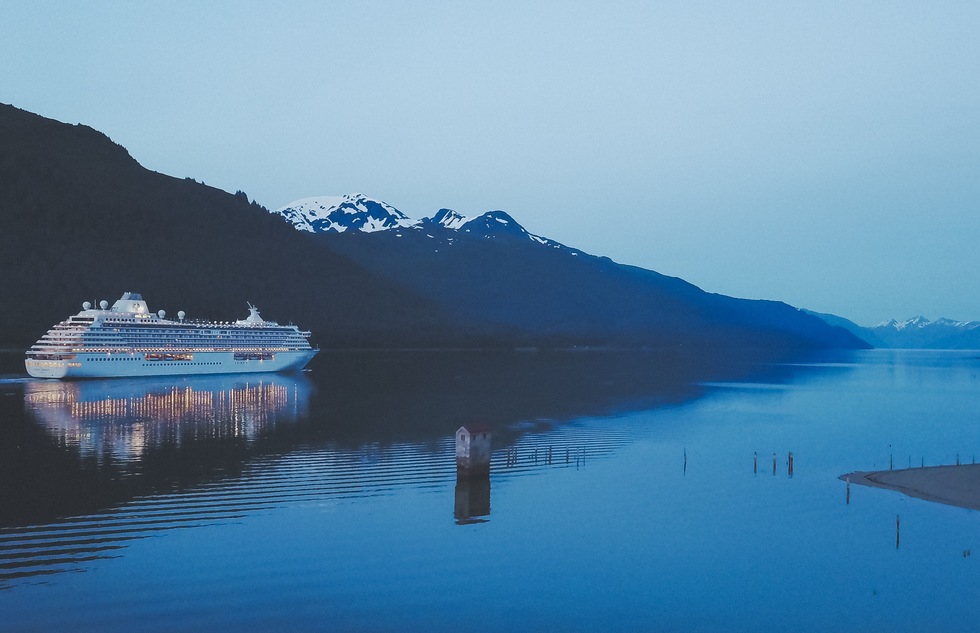
The Best U.S. Cruise Destinations—No Passport Required
Travelers in search of unforgettable landscapes, remote wilderness areas, abundant wildlife, and once-in-a-lifetime adventures (such as dog-sledding on a glacier), can book a cruise to Alaska from the Port of Seattle. Seven-day Inside Passage voyages are available with several lines, including Holland America, Norwegian, Celebrity, and Royal Caribbean. If you want to go with a line that’s an expert in the region, Holland America has been sailing to Alaska for more than 75 years. Princess is a close second with 65 years of experience.
Ports of call and scenic cruising day locations vary, depending on the line, but voyages typically include stops in Juneau, Sitka, Ketchikan, and Victoria, British Columbia. For longer 10- or 11-day cruises, opt for a round-trip itinerary departing from San Francisco.
A few cruise lines, including Celebrity and Norwegian, operate round-trip itineraries from Honolulu. If you’d prefer not to fly to Hawaii , you can set sail on a longer cruise from the West Coast.
Princess ’s 16-day voyages depart from either Los Angeles or San Francisco and include stops in four islands in Hawaii as well as the port of Ensenada, Mexico. Carnival has a similar 14-day voyage from Los Angeles.
For the ultimate Hawaiian cruise, Holland America’s 18-day Circle Hawaii itinerary from San Diego visits five ports of call on four Hawaiian Islands, plus Ensenada, before returning to San Diego.
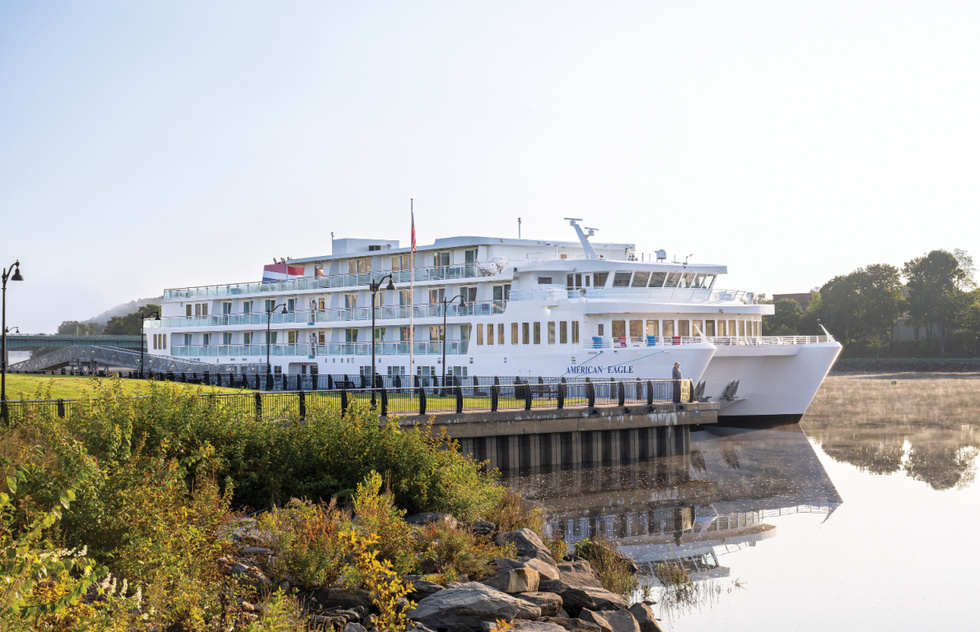
U.S. Rivers and Coastal Waters
In the Lower 48, travelers have plenty of options to travel the country’s waterways aboard a small-ship river or coastal cruise.
American Cruise Lines maintains a portfolio of more than 50 itineraries plied by a fleet of riverboats, coastal cruise ships, and classic paddlewheelers accommodating 90 to 180 guests at a time. You can sail the Lower or Upper Mississippi River, head for the Pacific Northwest’s Snake and Columbia rivers, take a fall cruise to see the foliage along the Hudson River Valley in New York State, and more.
You can even travel between several national parks on a land-and-sea adventure that includes visits to Yellowstone, Glacier, and Grand Teton national parks. For a coastal cruise, the line features itineraries in New England, the Southeast, Florida, Alaska, along the Chesapeake Bay, and in Washington State’s Puget Sound to visit the San Juan Islands. None of the voyages from American Cruise Lines requires a passport.
Viking has 10 river cruise options along the Mississippi, ranging from 8 to 22 days in length and running from New Orleans to the Midwest. And UnCruise Adventures offers passport-free voyages that sail exclusively within the U.S., too, with itineraries in Hawaii as well as Alaska voyages that do not sail into Canadian waters.
Related : Can I Cruise with Just a Driver's License?

- All Regions
- Australia & South Pacific
- Caribbean & Atlantic
- Central & South America
- Middle East & Africa
- North America
- Washington, D.C.
- San Francisco
- New York City
- Los Angeles
- Arts & Culture
- Beach & Water Sports
- Local Experiences
- Food & Drink
- Outdoor & Adventure
- National Parks
- Winter Sports
- Travelers with Disabilities
- Family & Kids
- All Slideshows
- Hotel Deals
- Car Rentals
- Flight Alerts
- Credit Cards & Loyalty Points
- Cruise News
- Entry Requirements & Customs
- Car, Bus, Rail News
- Money & Fees
- Health, Insurance, Security
- Packing & Luggage
- -Arthur Frommer Online
- -Passportable
- Road Trip Guides
- Alaska Made Easy
- Great Vacation Ideas in the U.S.A.
- Best of the Caribbean
- Best of Mexico
- Cruise Inspiration
- Best Places to Go 2024
What’s the best Caribbean cruise for me?

Jul 15, 2024 • 9 min read

Whether you're a family of four or a solo adventure junkie, the Caribbean has a cruise for you. Walter Bibikow / Getty Images.
It feels like just about everyone is headed on a cruise ship, and for good reason. There’s a real appeal to embarking on a getaway where your travel plans are already sorted; you only have to unpack once and arrive each morning in an exciting port of call.
Plus, new ships are rolling out incredible bells and whistles that push the limits of fun at sea (think indoor skydiving, roller coasters, and go-karts). At the same time, the cruise industry has shifted towards sustainable efforts that have emerged as fundamental to modern cruising.
Recent statistics from CLIA (the official Cruise Line International Association) show an increase of nearly two million passengers in 2023 (totaling 31.7 million) compared to pre-pandemic numbers in 2019.
And there’s no more popular cruising region than the Caribbean , where upwards of 37 cruise lines with 154 ships rove the idyllic paradise of islands. With so many options, sorting out which ship and itinerary fits you best can be confusing.
Here’s a handy guide to help determine which cruises are best for you, along with tips and advice to ensure you’re setting yourself up for a smooth sail.

What Caribbean cruise is best for me?
Sailing for adventure.
Whether you're into ziplining through the rainforest, scuba diving one of the world’s largest coral reefs or swimming at the base of a waterfall, cruises throughout the Caribbean offer excellent opportunities for adventure.
Cruise ports known for high-octane activities include St-Martin (known for its superb scuba diving), Belize (cave-tubing and ziplining throughout rainforest treetops) and St Lucia (the Sapphire Falls Hike).
Celebrity Cruises, Princess Cruises and Holland America have cruises that frequent these ports.
Best ships for families
Look for larger ships with kid-friendly pools, expansive kids' clubs and family-friendly entertainment. Royal Caribbean’s fleet features action-packed decks great for families with water slides, laser tag and mini golf.
Disney Cruise Line’s fleet sails extensively throughout the Caribbean to ports that span from Cozumel , Mexico, to Willemstad , Curaçao. The line’s most common Caribbean offerings are shorter 3- and 4-night itineraries that are perfect for families looking for a short trip.
Cruise lines with private islands operate predominantly in the Bahamas , including Royal Caribbean, Disney Cruise Line and Norwegian Cruise Line. These stops are great family destinations as they feature enclosed, private environments with kids' activities and the ease of charging everything to your sea pass card.
Singles at sea
Cruises can be an excellent place for singles to mix and mingle. A standard cruise stateroom rate is usually calculated at a minimum two-adult rate. Singles wishing to book a standard stateroom are typically charged a single supplement fee ranging from 50% - 100% of their base fare.
As the demand for single cruise accommodations grows, new ship builds include solo staterooms, both interior and with balconies. Look to Celebrity Cruises, Virgin Voyages, and Norwegian Cruise Lines for some of the best accommodations for solo travelers.
Most relaxing getaways
The most relaxing cruises sailing through the Caribbean tend to be the smaller ships focusing on a more “resort at sea” vibe. The higher-end ships with all-inclusive rates offer the luxury of seamless vacations. Windstar, Seabourn and Viking are the best lines for a relaxing cruise.
On these ships you’ll find daily activities that swap dance parties and poolside games for fitness-oriented activities like yoga and strength training classes, lectures on upcoming ports and ample lounge chairs to soak up the sun by the pool.
From your first step onboard, all your food and drinks (except for certain vintage wines and spirits), activities and sometimes your port excursions are included in your rate.
Itineraries like the Viking Ocean Cruises’ West Indies Explorer sail a 10-day itinerary roundtrip from San Juan, Puerto Rico, with stops that include Tortola, British Virgin Islands; St. Kitts, Saint Kitts & Nevis and Roseau, Dominica. Rates for Viking Ocean Cruises include one shore excursion per port.

Best parties at sea
As the classic notion of cruising sunsets – goodbye white glove service, shuffleboard, Baked Alaska – a new era of fun is afloat.
Large ships are built to maximize fun, whether you're hopping pool parties, dancing the night away at late-night discos or cheering your team at rousing sports bars. Special interest cruises are also an excellent option for the most immersive fun at sea, whether that’s a full ship charter rock concert like the Rock Legends Cruise , a trip dedicated to Golden Girls fans , or an LGBTQ+ charter like VACAYA .
Favorite lines that feature an upbeat party vibe include Margaritaville at Sea (particularly on their new Islander), Virgin Voyages and Norwegian Cruise Line.
A quick getaway
You’ll find cruise lines are leaning into shorter itineraries that offer weekend getaways to nearby ports in the Caribbean. Most of these sailings are roundtrip from Florida’s top cruise ports: Miami , Fort Lauderdale and Orlando (Port Canaveral). These are often 3- and 4-night sailings featuring a stop in The Bahamas or Bermuda .
The vibe onboard is often more upbeat and celebratory, as guests do their best to maximize their limited time at sea.
A few favorite lines for this style of travel include Celebrity Cruises, Royal Caribbean (who is launching Utopia of the Seas this summer as its first-ever large-scale ship that will exclusively sail short getaways) and Disney Cruise Line.
An extended journey through the Caribbean
Smaller cruise lines offer longer, extensive itineraries throughout the Caribbean; smaller ships can port far off the beaten path at more remote destinations. Itineraries like Seabourn’s “25-Day Captivating Antillean Treasures” sail to some of the lesser trafficked parts of the Caribbean including Marigot, St. Martin; Carambola Beach, Saint Kitts and Nevis; and Sopers Hole (Frenchmans Cay), BVI. Lines like Silversea, Windstar Cruises and Azamara are favorites that route to these idyllic destinations.
When should I go on my cruise?
There are sailings throughout the Caribbean year-round, with high season running from November through April. This period is known for its optimal sailing conditions and weather.
You’ll find cheaper sailings during the hurricane season, typically July through September, though you risk the chance of your trip being canceled or rerouted to avoid inclement weather.
Holiday sailings (particularly during Thanksgiving, Christmas and New Year’s Eve) are also excellent times to sail as cruise lines curate impressive decor and holiday-themed activities.
How do I know if my cruise line is operating sustainably?
Conservation efforts have become a vital tenet of the future of cruising, with the industry gearing towards carbon-zero sailings by 2050 . Efforts underway include ship engines that run cleaner on alternative fuels, advanced wastewater systems that can better clean sewage water and exhaust gas cleaning systems to improve air quality at sea and in port.
Friends of the Earth’s Cruise Ship Report Card is a great resource to assess a ship’s sustainability efforts.
A few lines at the forefront of sustainable sailing include Ponant, Disney Cruise Line and Hurtigruten. Ponant recently became the first maritime cruise line to receive Green Globe certification, which recognizes the line’s commitment to reducing its environmental footprint. The line has shifted away from heavy fuel oil and installed catalytic systems to reduce atmospheric emissions.
Disney Cruise Line aims to operate with carbon emissions at net zero by 2030, in part by shifting to alternative fuels like liquefied natural gas (LNG) and hydrotreated vegetable oil.
Hurtigruten is currently developing a zero-emission propulsion ship, which is aiming to be unveiled by 2030.
There are still a large number of travelers who oppose the notion of cruise ships for not only their impact on the environment, but on local economies as well. Groups like Friends of the Earth , CLIA and Oceana are excellent organizations devoted to regulating the cruise industry.

Need to know before you go
Here are some helpful tips to keep in mind when you’re booking a Caribbean cruise.
Book in advance...
Cruise lines offer better rates further from your sailing date, often making sailings available to book more than a year out. The earlier you book, the better the selection of staterooms to choose from.
Or take advantage of last minute deals
Cruise Plum is our go-to with a comprehensive overview of discounted inventories if you're angling for a last-minute getaway.
Opt for third-party travel insurance for hurricane season protection
Travel insurance is the best way to ensure smooth sailings on your Caribbean cruise. Typical cruise insurance rates hover around 5 to 10% of your total trip cost.
Don’t just opt into the cruise line’s designated insurance option; shop around on a platform like Squaremouth for the most value.
Look for a plan specific to cruise travel, with coverage that includes compensation for delays, cancellations (particularly helpful during hurricane season), emergency medical, and the premium option of canceling for any reason (CFAR).
Be hurricane-aware
Hurricane season in the Caribbean is typically July through September. The outlook for the 2024 season from NOAA’s (National Oceanic and Atmospheric Administration) predicts an 85% chance of an above-normal season with the potential range of 8-13 hurricanes with winds of at least 74 mph.
Cruise lines work expeditiously to avoid sailing into the path of any major tropical storm or hurricane, often rerouting or shortening itineraries as threats arise. Cruises rarely encounter major storms as they’re able to chart the course of the weather and route accordingly.
In the event you encounter a major storm while at sea, head to the middle of the ship where you’ll feel the rolling of the ship less, take over-the-counter aids like Dramamine or Bonine and keep your eyes on the horizon for stability balance.
You don’t necessarily need a passport
Passports are not required for closed-loop sailings that begin and end at a US port. All you need is a boarding pass, a government photo ID (if you’re 16 years or older) and a certified birth certificate or certificate of US naturalization.
However, keep in mind that you might not be able to disembark the ship at certain ports (those ports include Barbados , Martinique and St-Barthélemy ).
Third-party excursions can be a better value play
If you want to stretch your dollar further, consider booking with local tour operators before arriving at each port. It’s important to note that third-party excursions are the best when they’re morning-only activities.
The ship won’t wait for you if you’re late returning from a third-party excursion. For full-day excursions, consider the line’s offerings, as the ship will wait for you, and there’s nothing worse than missing the boat.
Explore related stories

Walking Tour
Jul 18, 2024 • 3 min read
A vision of pastel with tropical flair, this photogenic route takes you by many of South Beach's most eye-catching Art Deco buildings.

Jul 17, 2024 • 7 min read

Jul 14, 2024 • 11 min read

Jun 29, 2024 • 8 min read

Jun 28, 2024 • 7 min read

Jun 26, 2024 • 7 min read

Jun 23, 2024 • 6 min read

Jun 21, 2024 • 5 min read

Jun 21, 2024 • 9 min read

Jun 20, 2024 • 8 min read

Here's When You Need (and Don't Need) a Passport to Cruise
T o determine whether or not you need a passport to cruise, you first need to figure out if the itinerary is closed-loop or open-loop (also known as open-jaw).
Closed-loop cruise: A closed-loop cruise typically doesn't require a passport since it begins and ends in the same U.S. port (though there are some exceptions to this rule).
Example: Royal Caribbean International 's seven-night Western Caribbean & Perfect Day cruise stops in several countries – the Bahamas, Jamaica, Haiti and Grand Cayman – but the itinerary is considered closed-loop because it starts and ends in Fort Lauderdale, Florida.
Open-loop cruise: An open-loop cruise begins in one U.S. port and ends in a different U.S. port.
Example: Carnival Cruise Line 's 16-day Panama Canal from Seattle itinerary is not considered closed-loop because it departs from Seattle and completes its journey in New Orleans.
All of the above regulations have been determined by the Western Hemisphere Travel Initiative: a plan by the departments of State and Homeland Security that determines which documents are acceptable for proving identity and citizenship when entering the United States.
Where to cruise without a passport
There are several destinations where you can cruise without a passport on a closed-loop sailing. They include the following:
- The Bahamas
When looking at cruises to these locations, be mindful of the home ports. The Bahamas, Mexico, Bermuda, the Caribbean and Canada are all foreign ports, which means they only qualify for the passport exception if they are a stop along your cruise itinerary . If the cruise originates in any of these countries, it is likely you will need a passport.
Since Alaska, Hawaii and New England are all U.S. destinations, any closed-loop routes departing from these locations will not require a passport. However, keep in mind that it can be hard to find closed-loop cruises originating in Hawaii or Alaska.
To find closed-loop itineraries for a Hawaiian voyage or Alaskan cruise , try searching for sailings departing from major cities on the West Coast, like Seattle or Los Angeles . By contrast, quite a few closed-loop cruises leave from New England ports, but they are often marketed as Canadian cruises.
360 Kiosk Email : Tips on Trips and Expert Picks
When you need a passport for closed-loop cruises
Some cruise itineraries include foreign ports that require a passport for disembarkation. This is most commonly an issue for travelers on a closed-loop Caribbean cruise. Barbados , Guadeloupe , Haiti, Martinique , St. Barts , and Trinidad and Tobago all require U.S. citizens to present a valid passport to disembark and enter the country, despite WHTI regulations not requiring a passport for these destinations. Labadee, Royal Caribbean's private island , is an exception and does not require a passport despite its location in Haiti.
If your itinerary includes a country requiring a U.S. passport, your cruise line will require you to have the passport at check-in. Note that your passport must not expire within six months of your arrival in a foreign country or else it won't be considered valid for international travel.
Read: The Easiest Way to Renew Your Passport
Acceptable forms of ID
All travelers – U.S. citizens and foreign nationals alike – must present documents that show identity and citizenship when entering the United States. A U.S. passport can show both. If you don't have one or don't want to bring one, be aware that you may need to present more than one document.
U.S. citizens 16 and older
If you're a U.S. citizen age 16 or older sailing on a closed-loop cruise without your passport, you will need a government-issued photo ID like a driver's license. In addition, you must present a document that proves your U.S. citizenship. These include:
- Passport card
- State-issued enhanced driver's license (EDL)
- Government-issued birth certificate
- Trusted Traveler Program card (NEXUS, SENTRI or FAST)
- American Indian Card (Form I-872) or Enhanced Tribal ID Card
The Trusted Traveler Programs are risk-based programs to facilitate the entry of travelers who have been vetted and preapproved. Most of these programs will provide you with a machine-readable card that allows you to pass through border checkpoints quickly. Keep in mind, some of these IDs are only available to travelers 16 and older.
Read: TSA Precheck vs. Global Entry
U.S. citizens younger than 16
U.S. citizens younger than 16 are only required to present proof of citizenship, such as one of the following documents:
- Original, notarized or certified copy of their government-issued birth certificate
- Consular Report of Birth Abroad issued by U.S. Department of State
- Certificate of Naturalization issued by U.S. Citizenship and Immigration Services
Read: How to Get a Passport for Kids
Non-U.S. citizens
If you are a lawful permanent resident (or LPR) of the United States, you are required to present a permanent resident card or other valid evidence of permanent residence status.
Non-U.S. citizens, with the exception of Canadians and Mexicans, are not subject to passport exceptions, so a valid passport will need to be provided. Canadian citizens can present a valid passport, Enhanced Driver's License or Trusted Traveler Program card. Mexican citizens must present a passport with a visa or a Border Crossing Card.
Unacceptable forms of ID
While most common forms of identification are accepted, there are a few exceptions. U.S. military identification cards and U.S. Merchant Mariner documents are valid forms of identification, but only when traveling on official orders or in conjunction with official maritime business, so it is unlikely they will be accepted when traveling on a cruise.
Here are some other documents that will not be accepted as proof of citizenship:
- Voter registration cards
- Social Security cards
- Baptismal papers
- Hospital certificates of birth (for anyone older than a newborn)
It is important to note that many of the permitted forms of identification, such as a passport card or EDL, are only accepted at land and sea border crossings. Unforeseen circumstances, such as a medical air evacuation, may cause you to return to the U.S. by air travel. In this case, these documents won't be accepted when you try to reenter at the border crossing.
To avoid extra delays in your return to the U.S. following unforeseen travel complications, the Department of State recommends that everyone taking a cruise from the United States carry a valid passport book in case of emergency.
Why Trust U.S. News Travel
Erin Vasta has traveled extensively to international destinations, gaining a deep knowledge of travel regulations in the process. Her expertise in this area has saved her family and friends from unnecessary travel delays and ensured stress-free trips through border security in nearly 15 countries. To write this article, Vasta used her international travel experience and research skills.
You might also be interested in:
- The Top Passport Holders
- Cruise Packing List: Essentials to Bring
- Safe at Sea: The Best Cruise Insurance
Copyright 2024 U.S. News & World Report
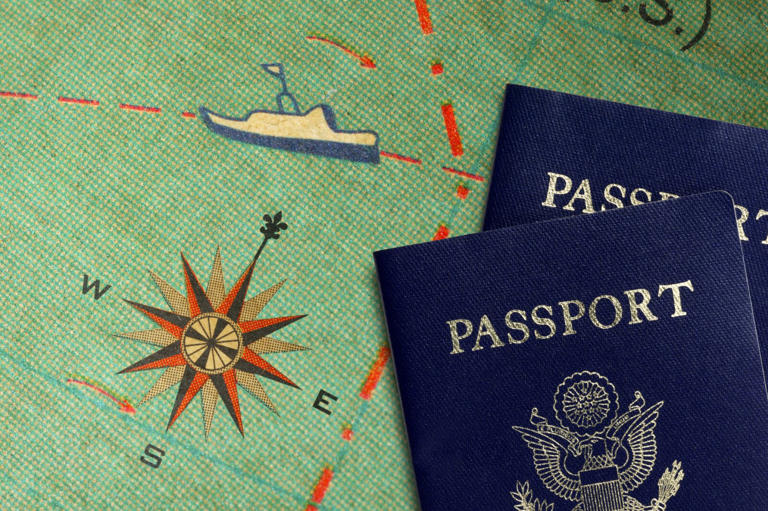

COMMENTS
Key West, Florida. In most cases, you don't need a passport for a closed-loop cruise. This is one of the reasons why these itineraries are so popular. You can, of course, use your passport or passport card as an ID if you have one. But in the case of closed-loop cruises, U.S. citizens are allowed to enter or depart the country with proof of ...
Actually, on a closed-loop cruise, U.S. citizens don't need a REAL ID driver's license, or a passport for that matter. You may still use a non-REAL ID driver's license. However, you will ALSO need a birth certificate or other proof of citizenship. If your name has changed, you will need proof of that as well.
U.S. citizens who board a cruise ship at a port within the United States, travel only within the Western Hemisphere, and return to the same U.S. port on the same ship (referred to as a "closed loop" cruise), may present a government issued photo identification, along with proof of citizenship (an original or copy of his or her birth ...
U.S. citizens on closed-loop cruises (cruises that begin and end at the same U.S. port) are able to enter the United States with a birth certificate and government-issued photo ID. Please be aware that you may still be required to present a passport to enter the countries your cruise ship is visiting. Check with your cruise line to ensure you ...
U.S. citizens on closed-loop cruises (cruises that begin and end at the same U.S. port) are able to enter the United States with a birth certificate and government-issued photo ID. Please be aware that you may still be required to present a passport to enter the countries your cruise ship is visiting. Check with your cruise line to ensure you ...
What Is a Closed Loop Cruise? You might have heard the term "closed loop cruise" in reference to a sailing and wondered what it meant. While it does have to do with the ports on the itinerary ...
The WHTI introduced the concept of a 'closed-loop cruise' as a cruise that begins and ends in the same U.S. port. This type of sailing was granted special documentation requirements to simplify travel. Specifically, on a closed-loop cruise, U.S. citizens were required to have only a birth certificate and a government-issued photo ID.
All closed loop cruises are round-trip cruises from the same port in the United States. Places You Can Go on a Closed Loop Cruise (Without a Passport) ... If you're 16 or older, you will also need a valid government-issued driver's license or picture ID that contains your photo, name and date of birth.
Closed-loop cruises are those that start and end at the same U.S. port and travel within the Western Hemisphere. U.S. citizens booked on those sailings can leave and enter the country with proof ...
Closed-loop cruises make financial sense for cruise lines as well as passengers. They can end one voyage and begin boarding the next a few hours later. ... (LPR), you must have your photo ID plus ...
A closed-loop cruise is a cruise that departs from and returns to the same U.S. port and remains in the Western Hemisphere. As such, it does not require the passengers to have a U.S. passport—even if the itinerary visits some international ports along the way. According to U.S. Customs and Borders Protection (CBP), rules established by the ...
Consider a cruise. If you take closed loop cruises (meaning your trip begins and ends at a U.S. port), you can sail to a variety of dreamy destinations as a U.S. citizen without a passport. For "closed-loop" cruises, U.S. citizens will need to provide: A boarding pass; A government photo I.D. if 16 years of age or older
To determine whether or not you need a passport to cruise, you first need to figure out if the itinerary is closed-loop or open-loop (also known as open-jaw). Closed-loop cruise: A closed-loop ...
An Alaskan cruise is one of the most popular closed-loop cruise options in the US. If departing from the United States, Alaska cruises depart from Seattle, San Francisco, or Los Angeles.
So, for instance, all of those round-trip cruises out of Miami and Fort Lauderdale are closed-loop cruises. All closed-loop cruises embark accept any of the following WHTI-permitted forms of US identification: a passport card, Enhanced Driver's License, Trusted Traveler Program ID (FAST, SENRI, and Nexus), or an I-872 American Indian ID in ...
U.S. citizens on closed-loop cruises (cruises that begin and end at the same U.S. port) are able to enter the United States with a birth certificate and government-issued photo ID. U.S. and Canadian citizen children ages 16 and under are able to enter with only proof of citizenship, such as a birth certificate.
The U.S. Department of State Bureau of Consular Affairs recommends all travelers departing from the U.S. have a passport book in hand. The exception to this rule is the closed-loop cruise. Ships within this category must satisfy strict regulations to achieve closed-loop status. Once they do, it's a cruise option that can be a viable solution ...
For that, you need only a birth certificate and a driver's license (or other acceptable, government-issued photo ID). You can't cruise just anywhere on a closed-loop sailing, but the choices are ...
The official definition of a closed-loop voyage originates and ends in the United States. However, it can visit contiguous territories or islands that are adjacent to the continental US at any time. However, it's important to note that for a cruise to be "closed-loop," it must begin and end in the same port. Leaving the East Coast and ...
In summary, closed-loop and open-jaw cruises have different passport requirements. If you're taking a closed-loop cruise, you can use a government-issued photo ID card and a birth certificate, a Consular Report of Birth Abroad, or a Naturalization Certificate as proof of citizenship, but a passport is always best.
West coast cruises to Hawaii and Alaska all have foreign ports and as long as they are closed loop, you do not need a passport. I know a lot of the closed loop cruises in the Caribbean don't require a passport; just a Real ID + birth certificate. What I don't know is if there are any closed loop cruises out of FL where you HAVE to have a passport.
An enhanced ID is a form of Real ID, but a Real ID isn't necessary enhanced if that makes any sense. With an enhanced ID, you can return to the US by land or sea from Canada, Mexico and some countries in the Caribbean. I did a closed loop cruise from NJ to the Bahamas. RC accepted my NYS enhanced ID without issue. 1.
A "closed-loop" cruise is a round-trip voyage that begins and ends in the same U.S. port. ... such as an Enhanced Driver's License or a certified copy of a government-issued birth certificate along with a photo ID, such as a state-issued valid driver's license. Passengers under age 16 can get by with an "original, notarized or ...
Cruises that visit the Bahamas are great for families. Ruth Peterkin/Shutterstock ... Passports are not required for closed-loop sailings that begin and end at a US port. All you need is a boarding pass, a government photo ID (if you're 16 years or older) and a certified birth certificate or certificate of US naturalization. ...
It closed clinics, urgent care and other outpatient facilities on Friday but said that hospitals would remain open for inpatient care and medical emergencies. July 19, 2024, 12:13 p.m. ET
Closed-loop cruise: A closed-loop cruise typically doesn't require a passport since it begins and ends in the same U.S. port ... Acceptable forms of ID. All travelers - U.S. citizens and foreign ...